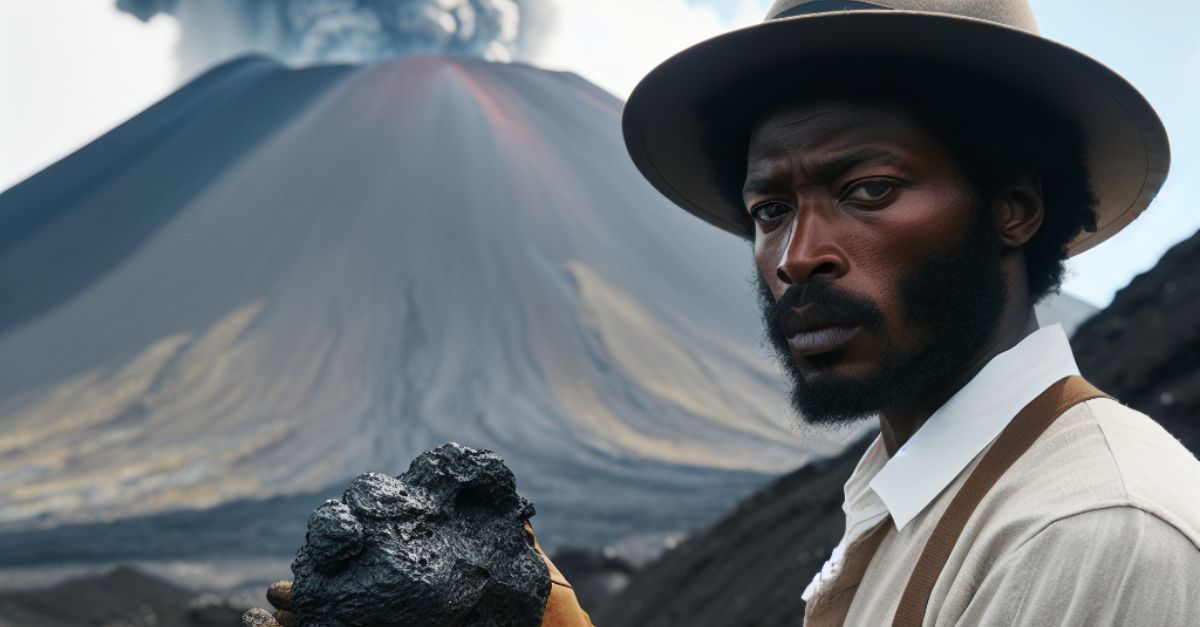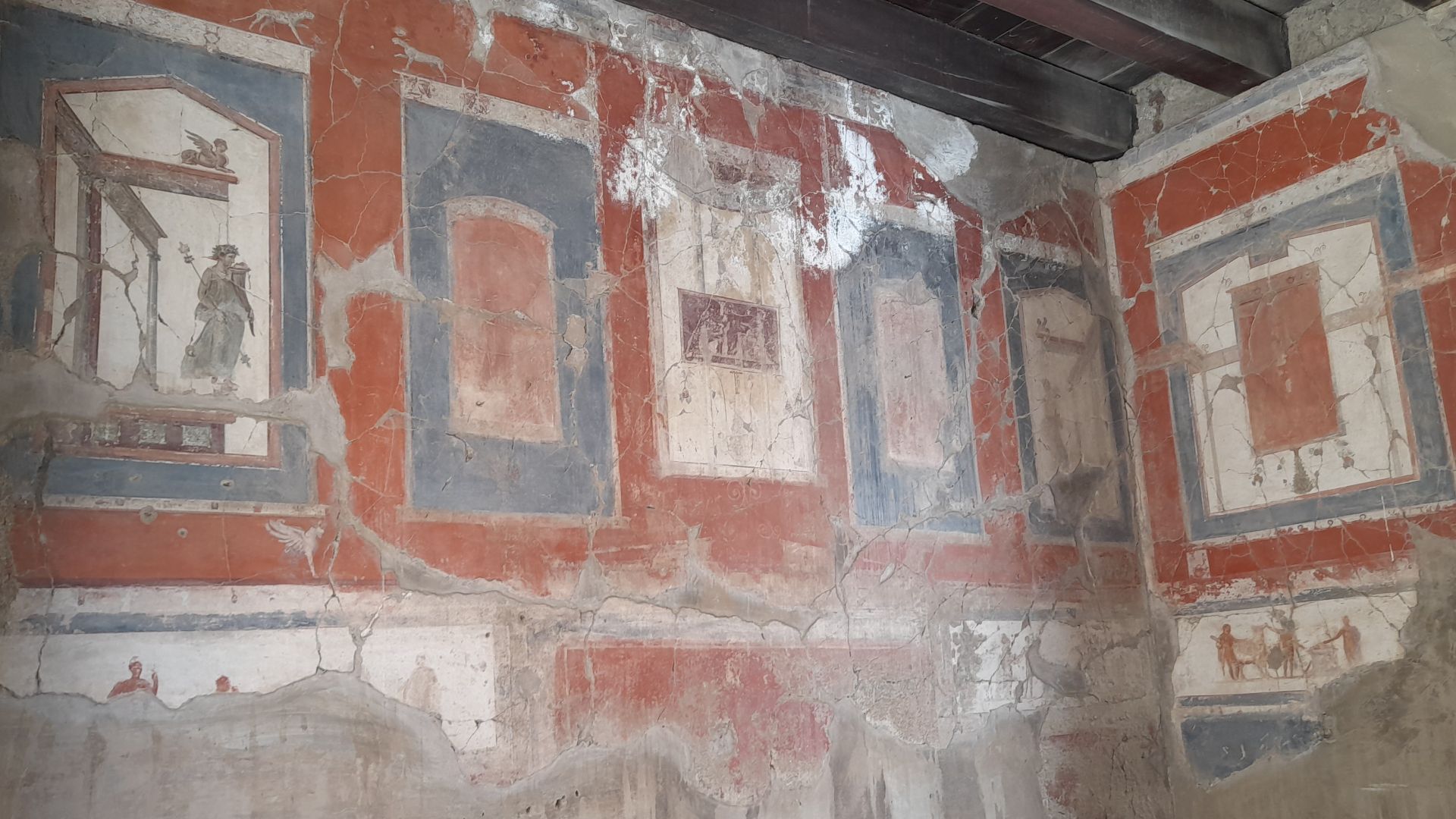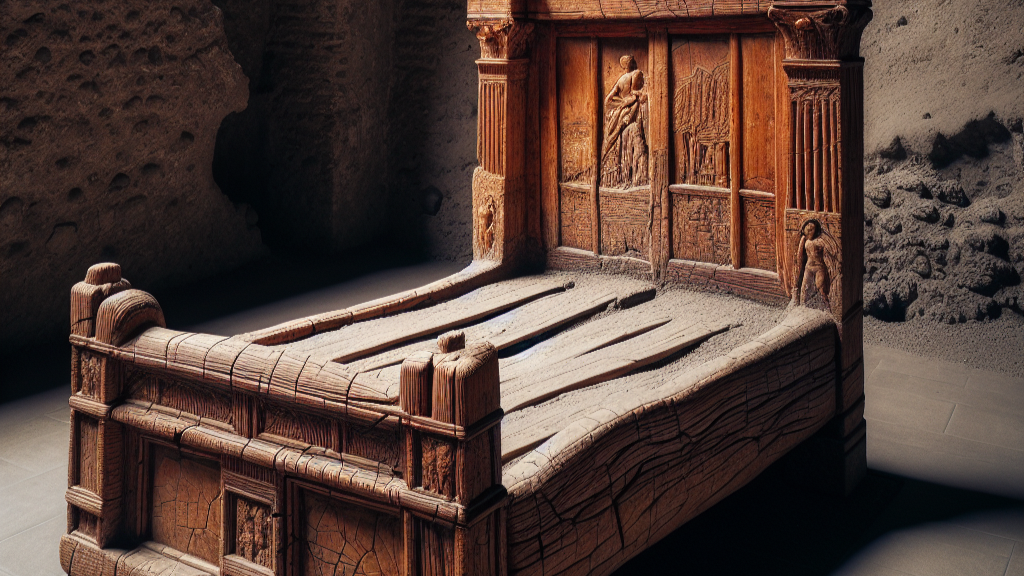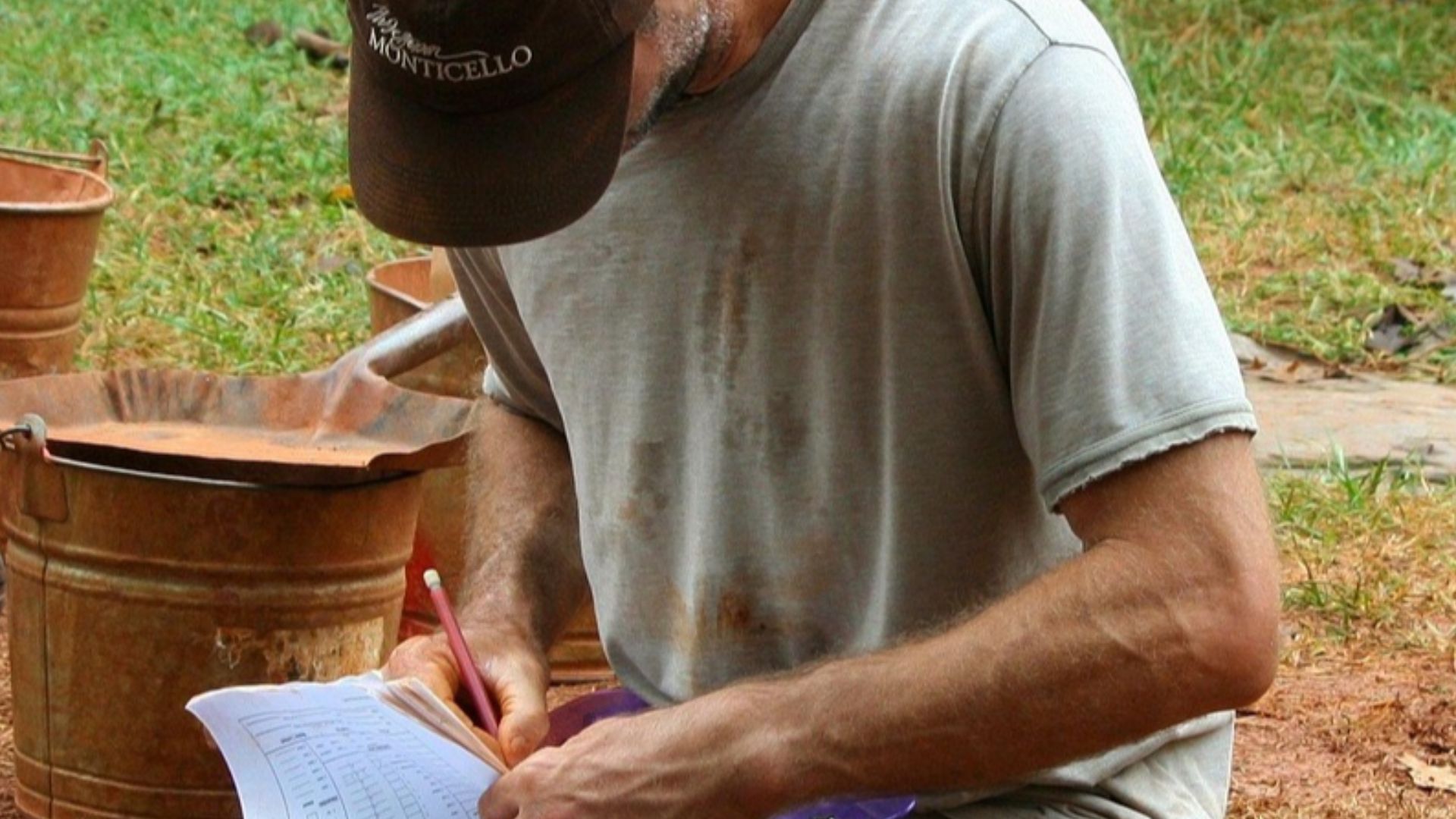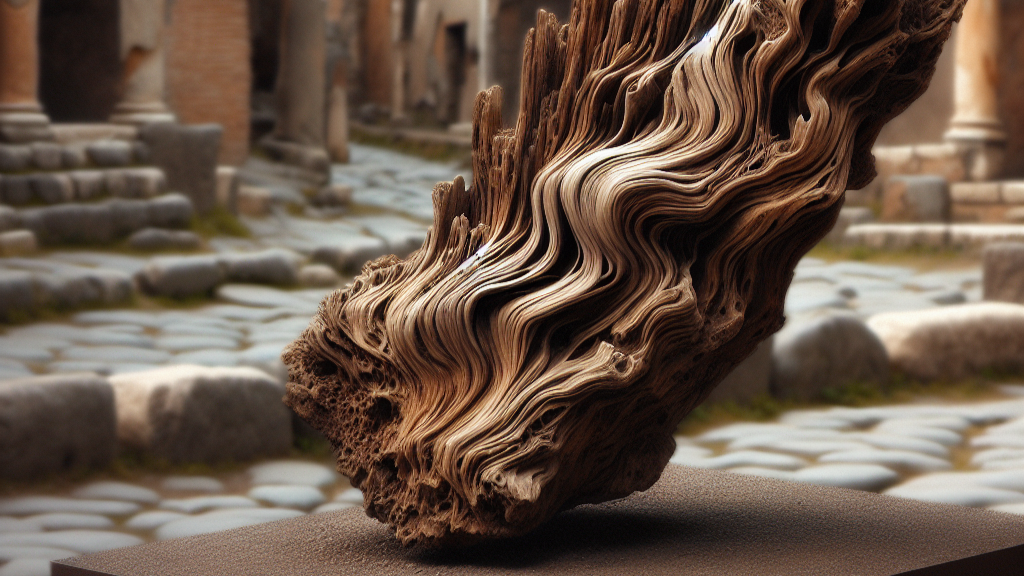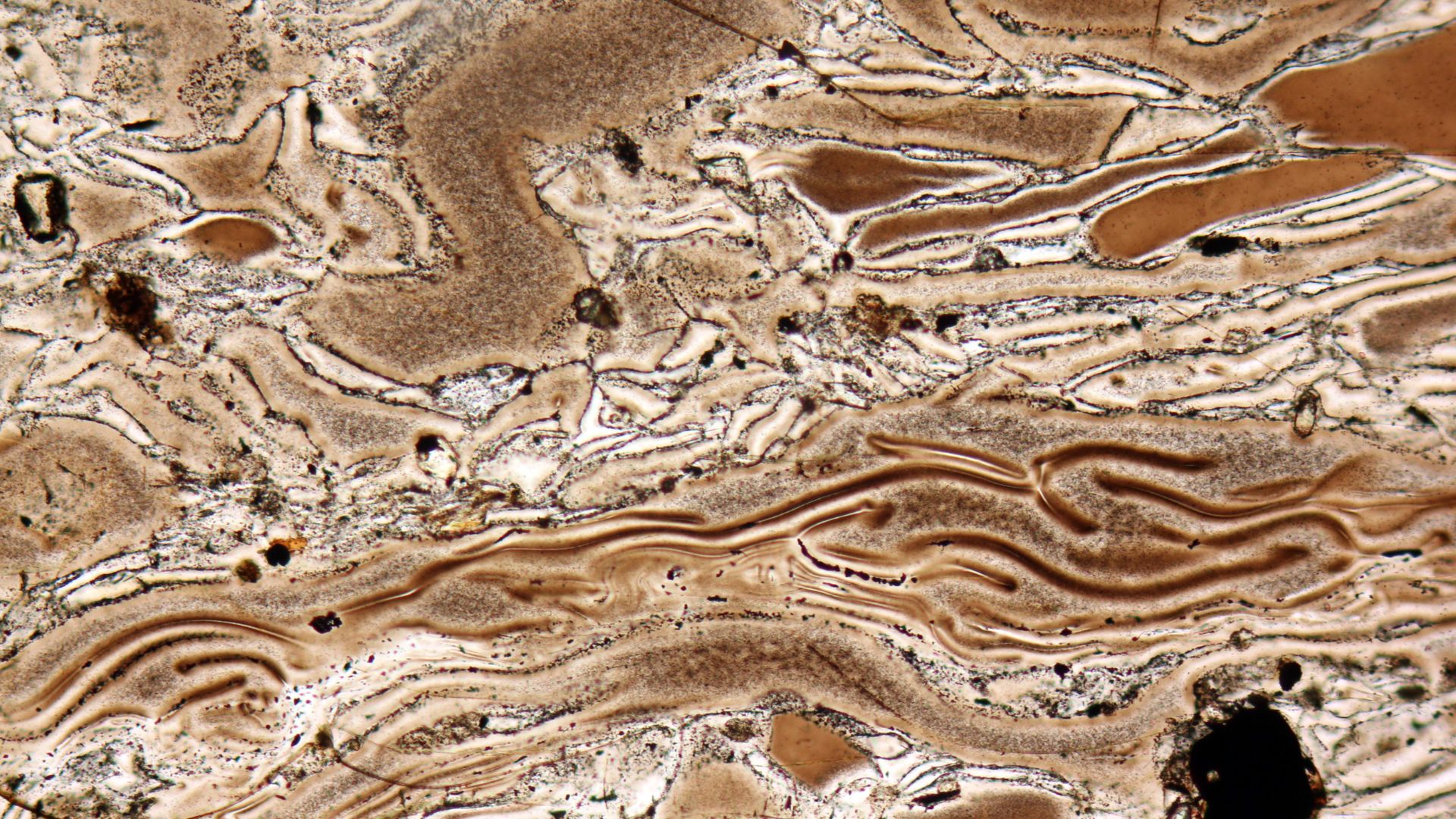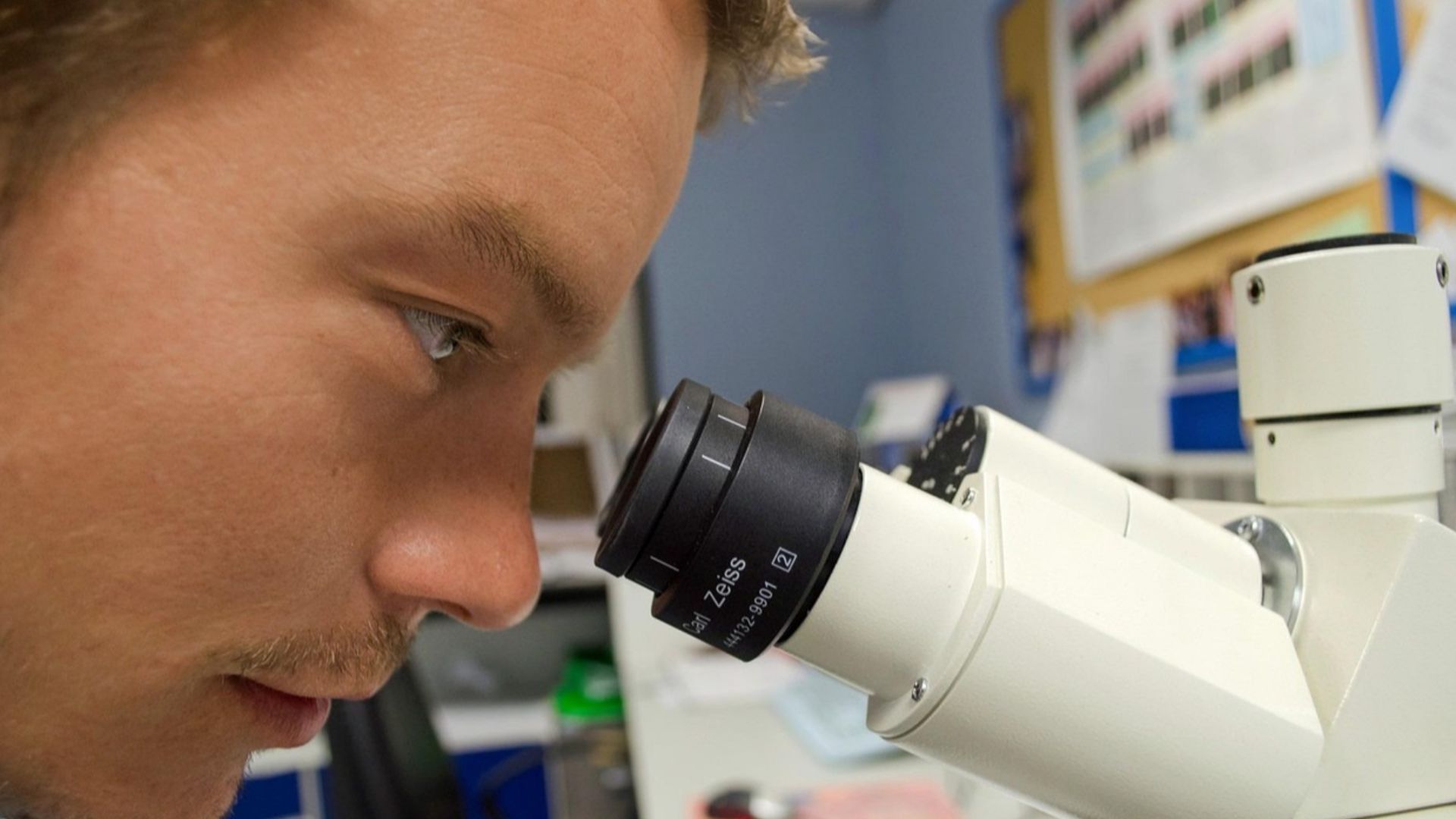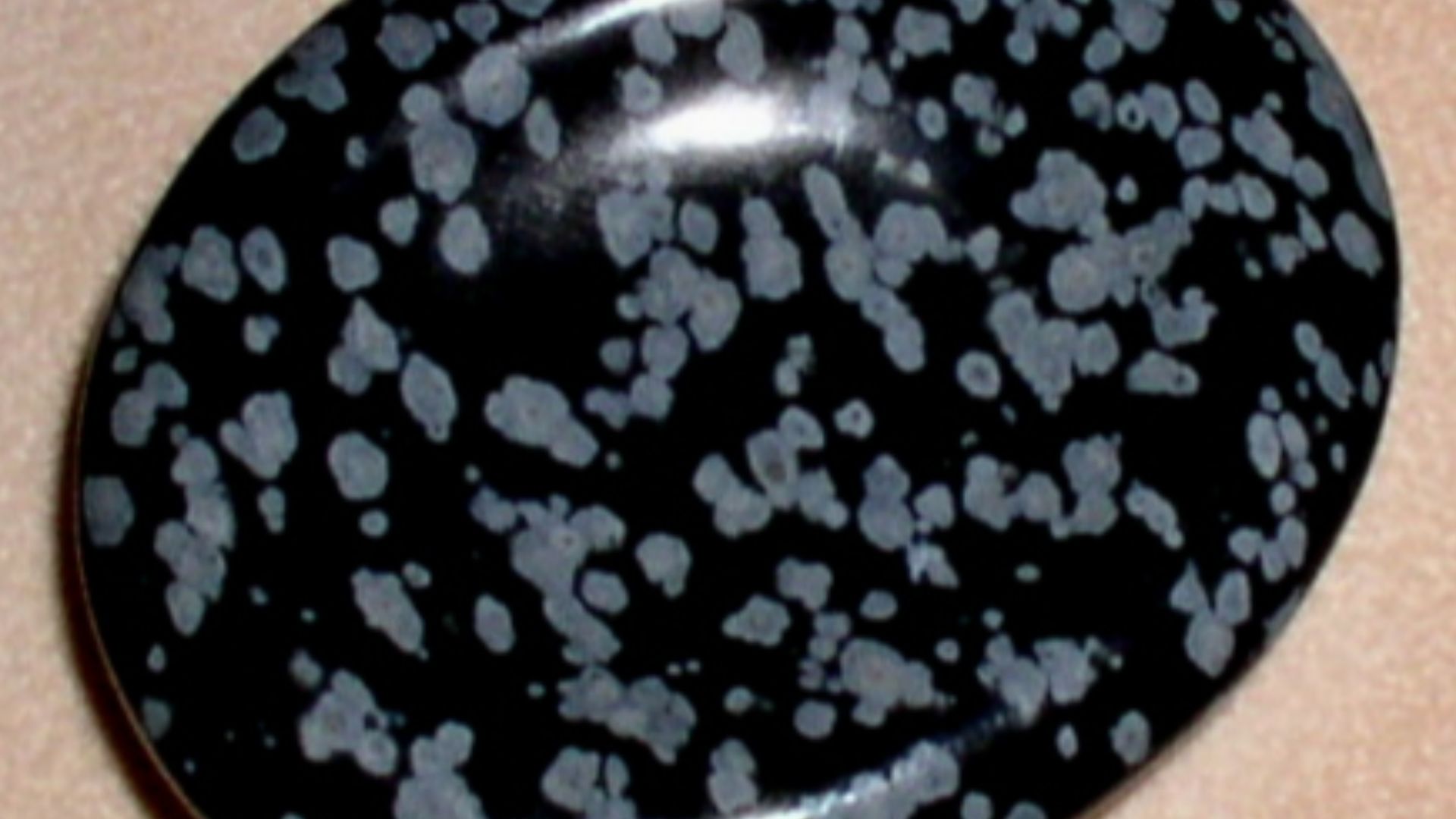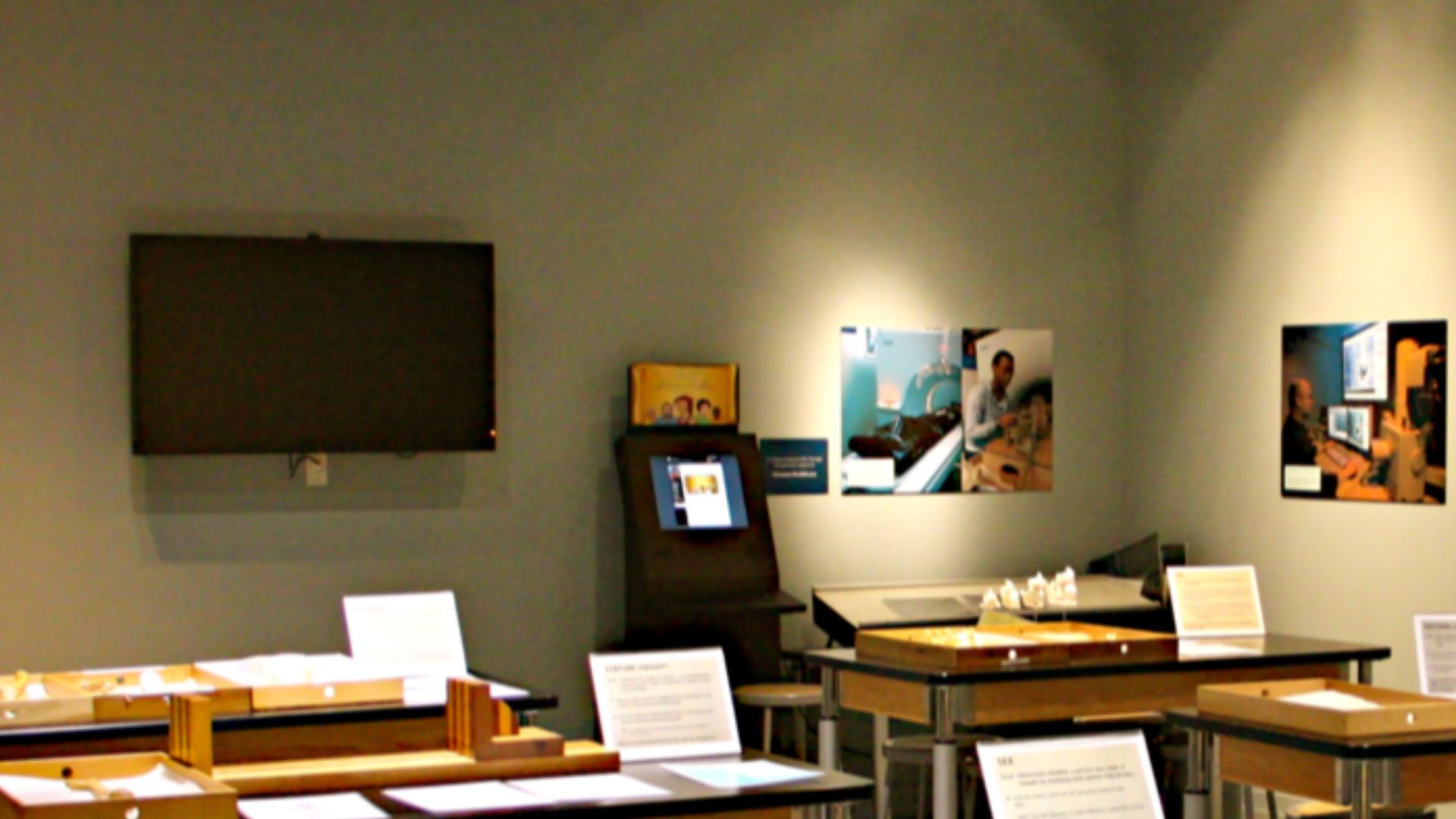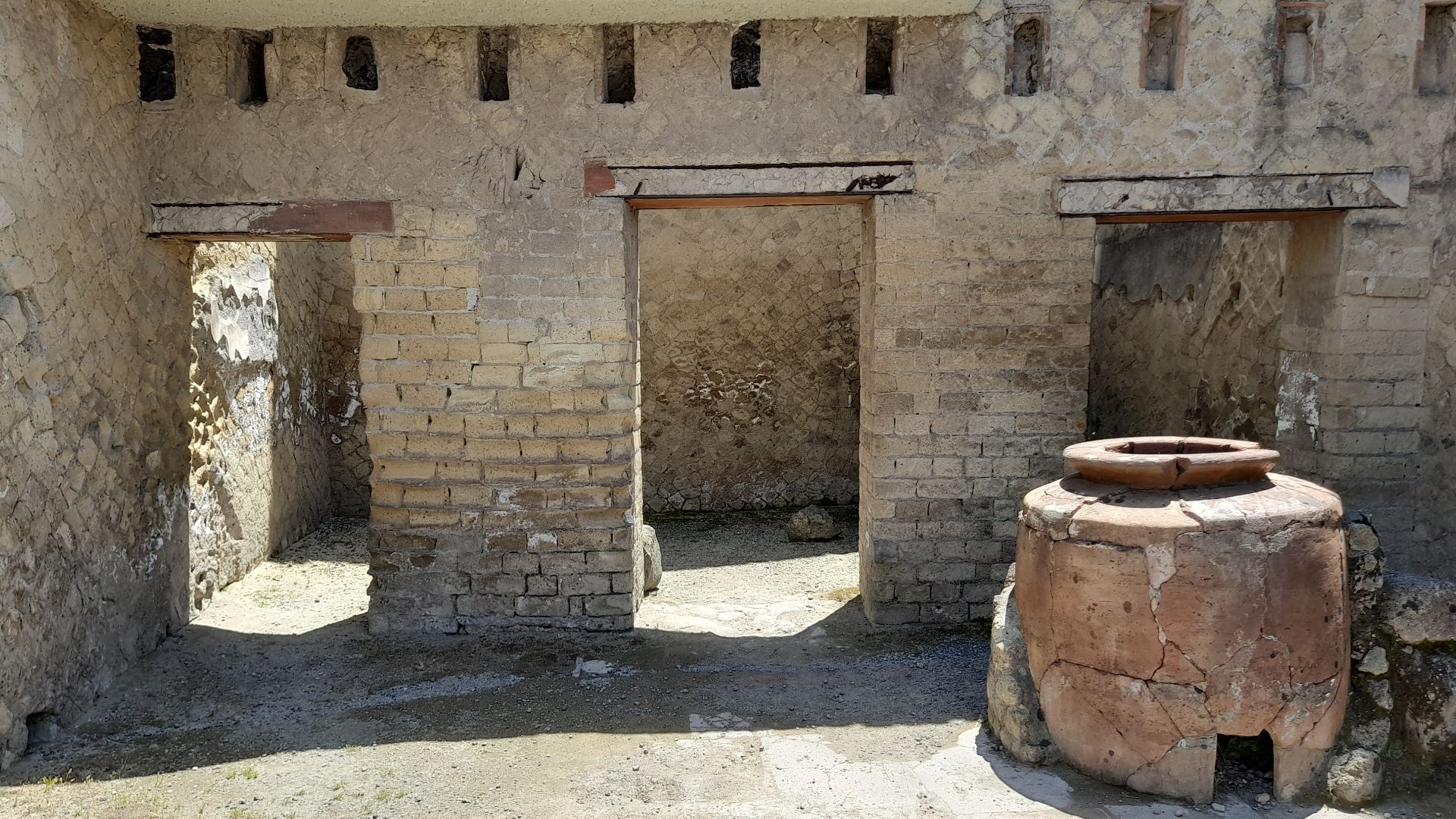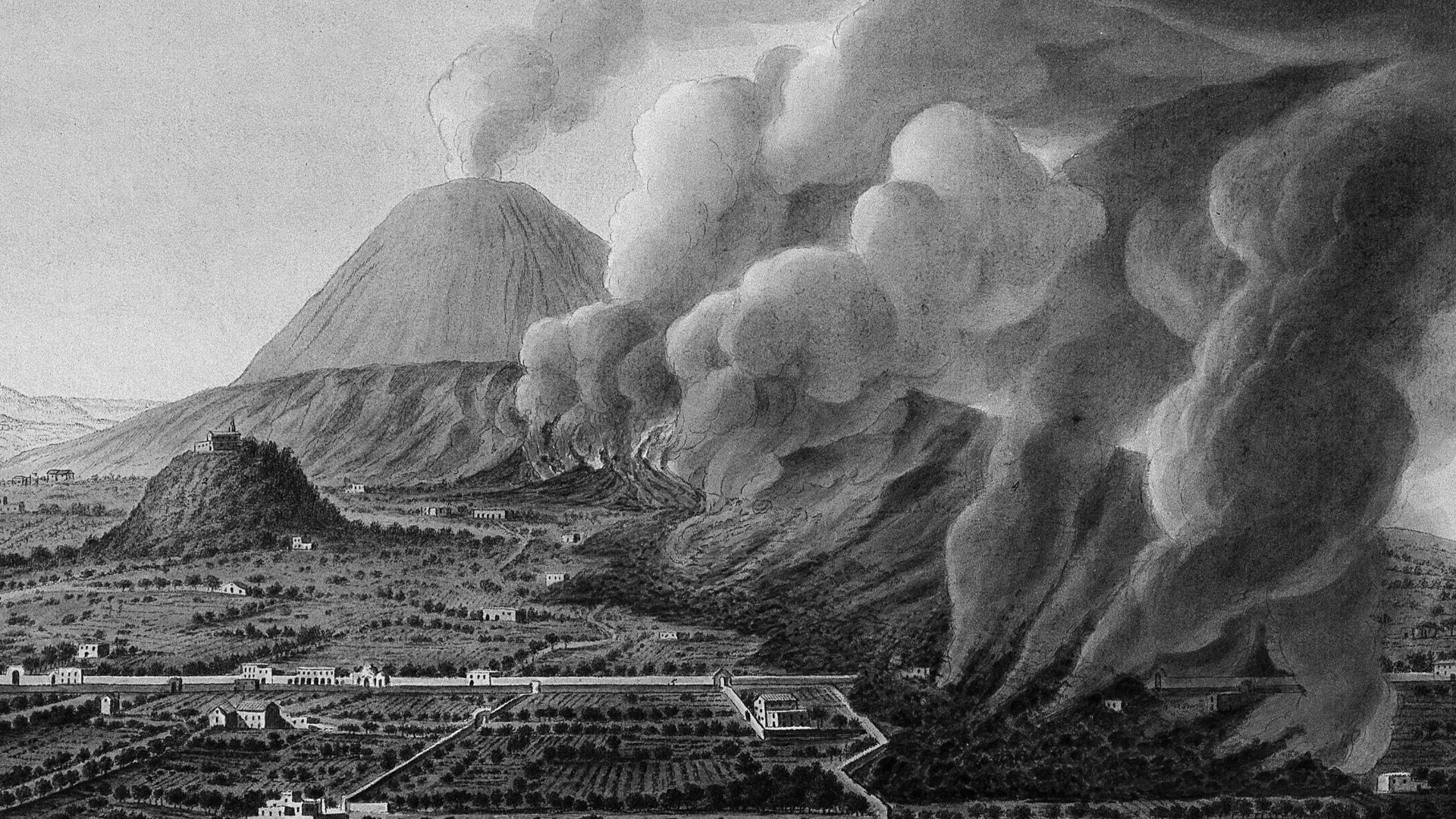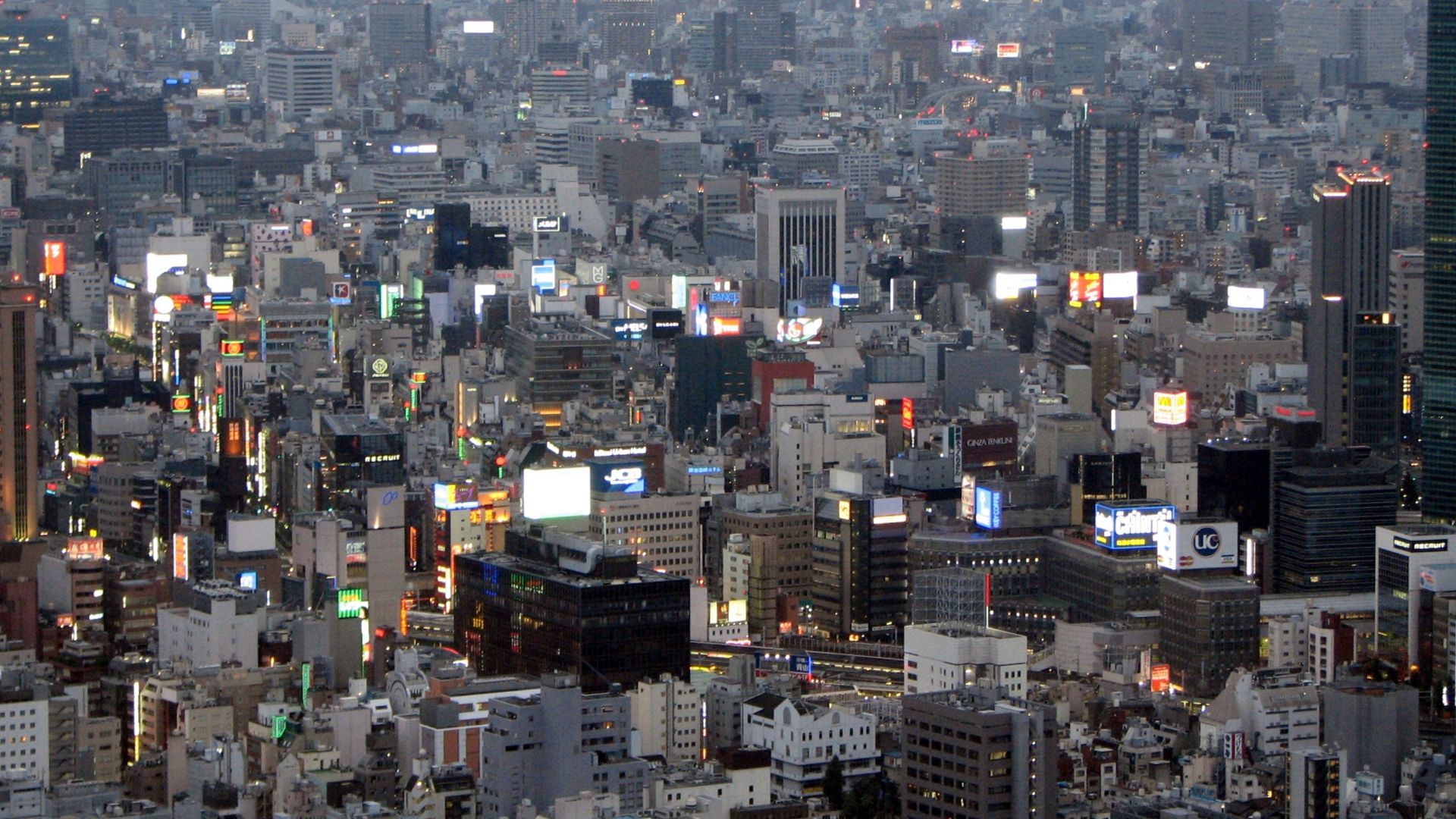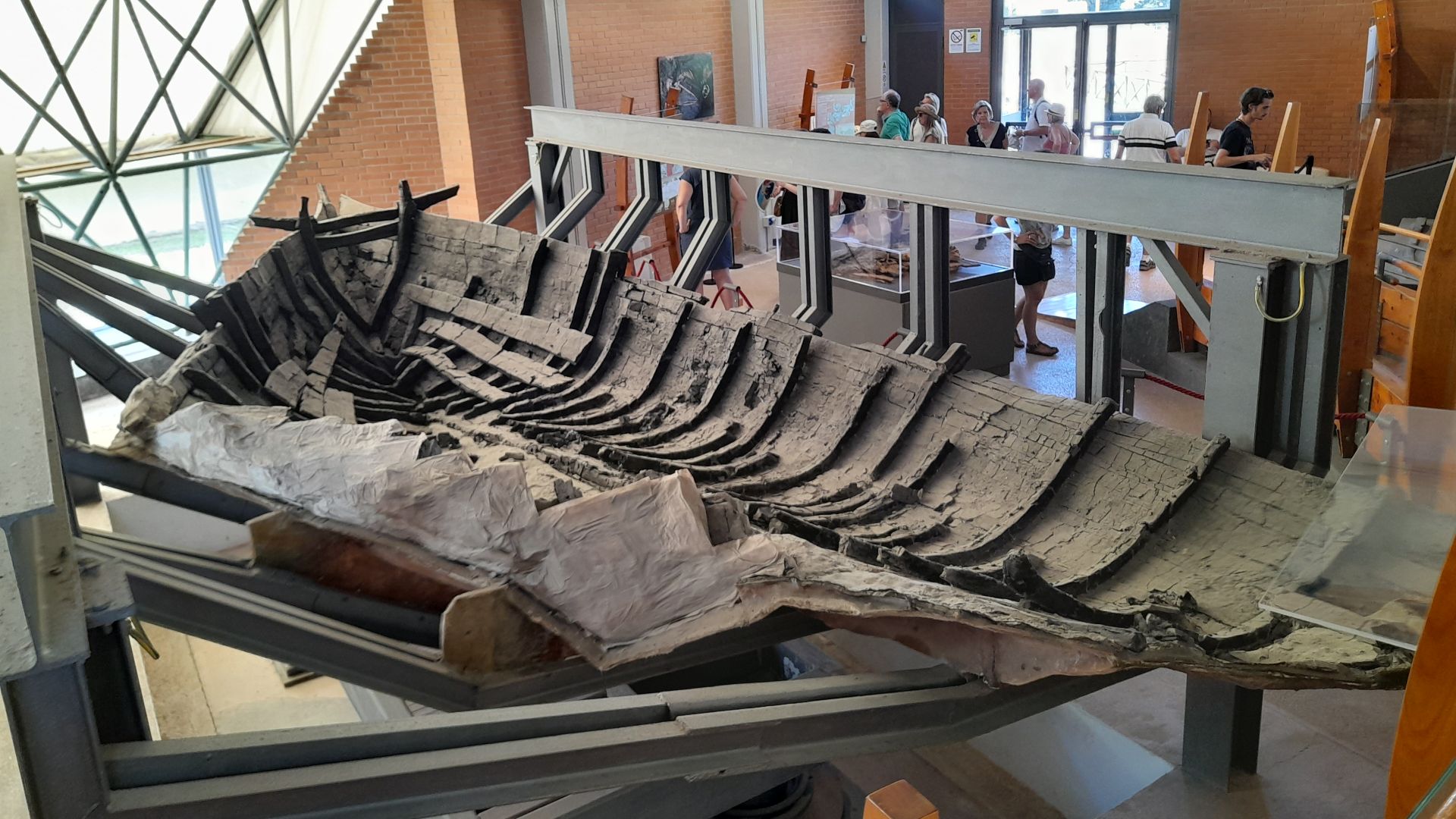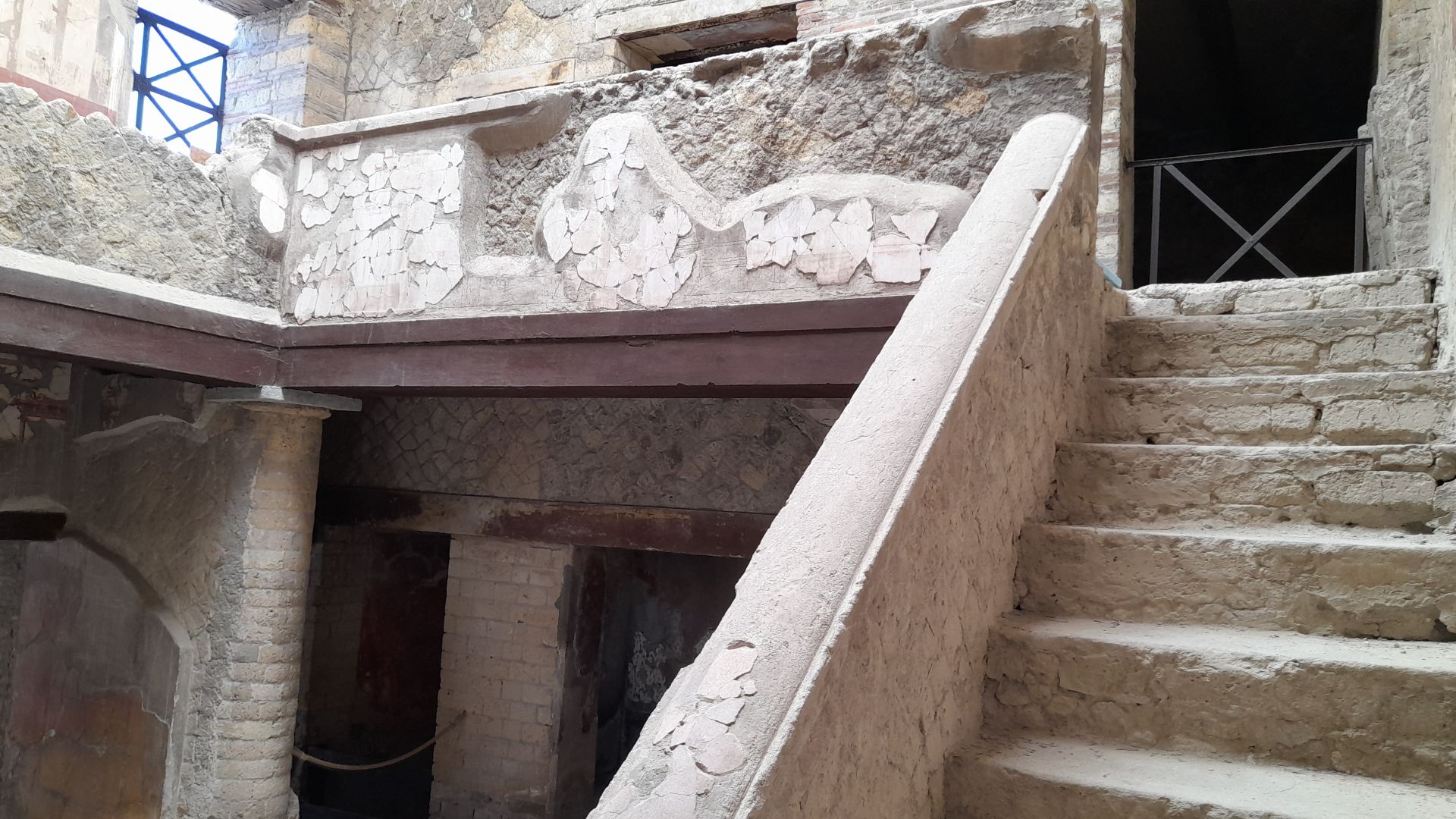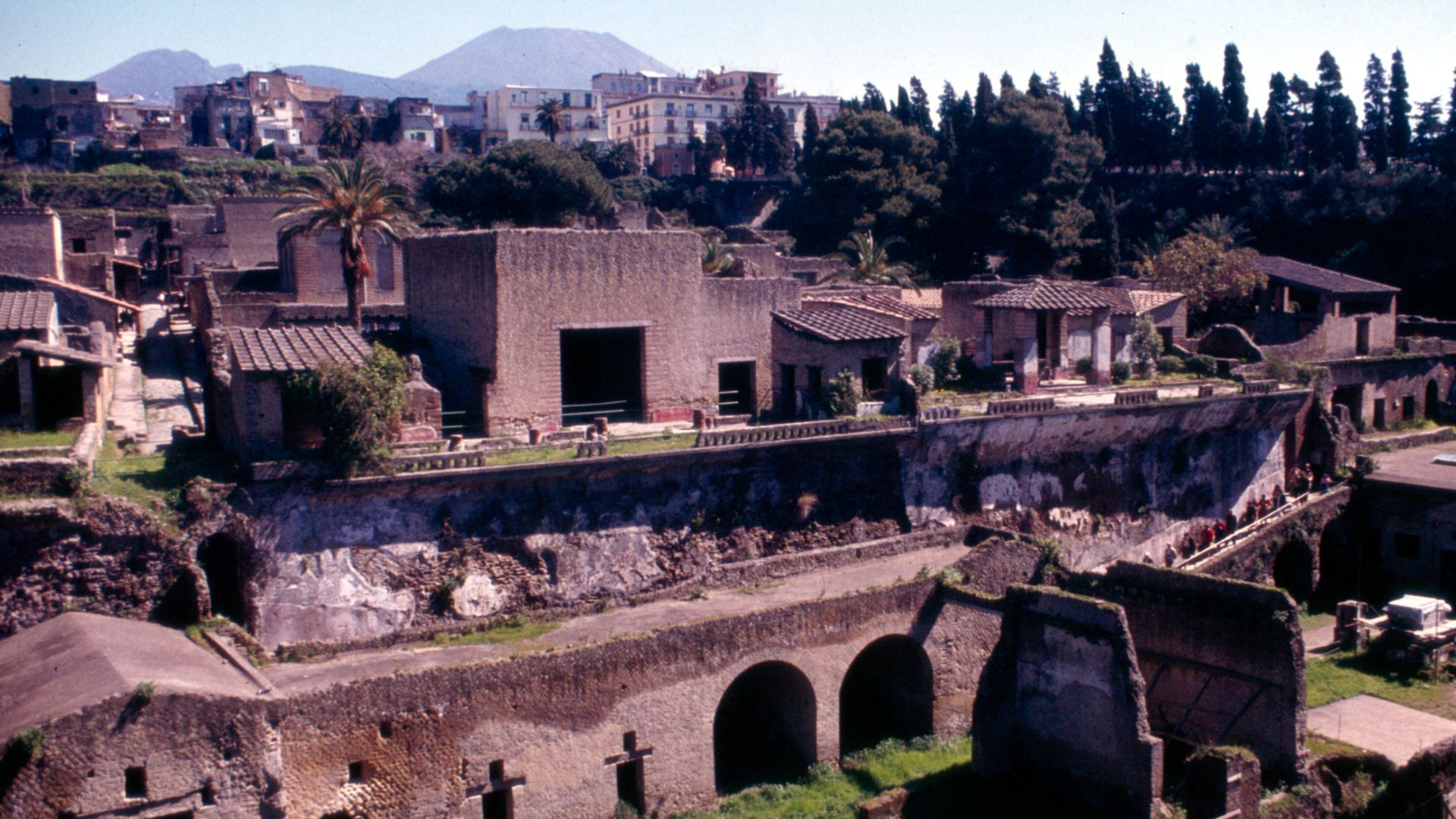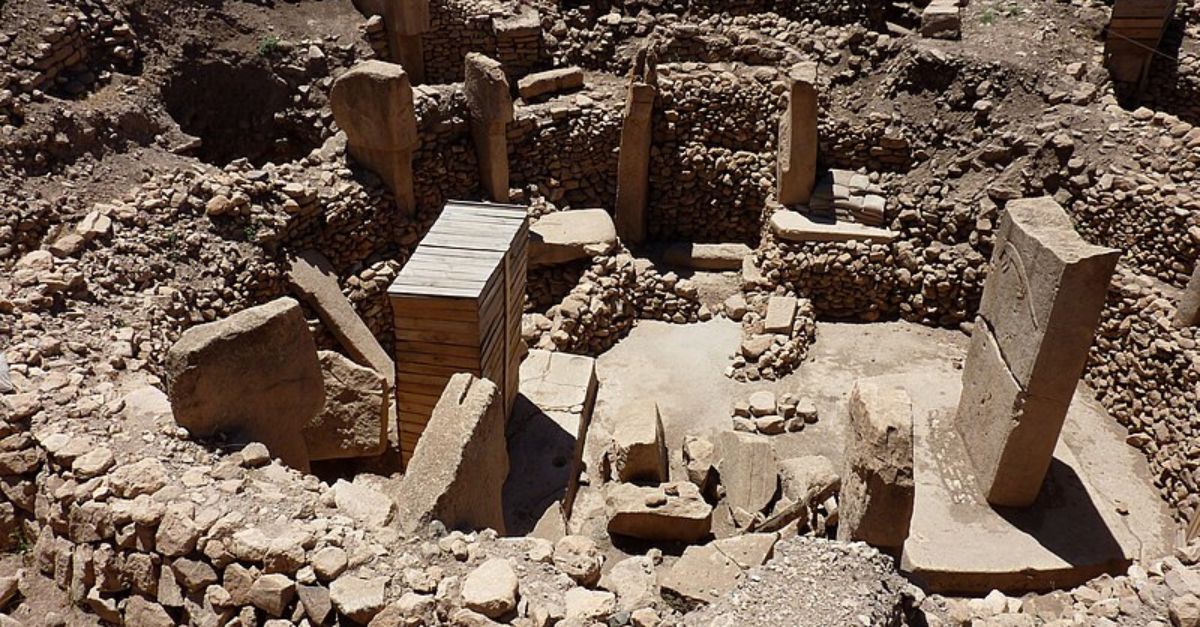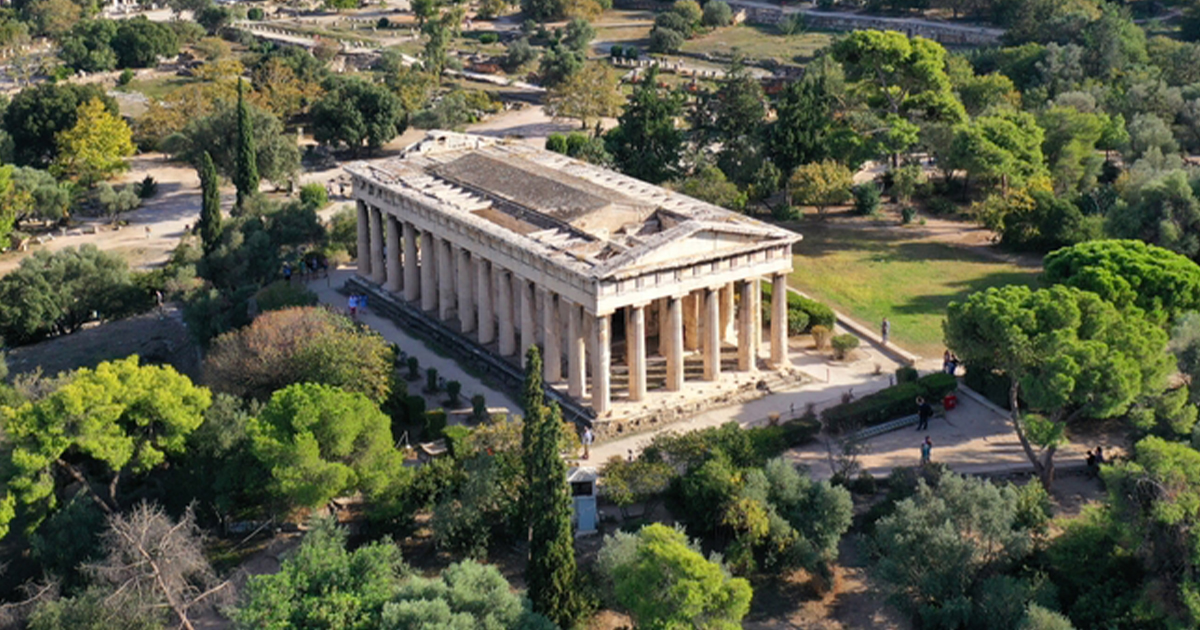A Glass Brain And The Fury Of Vesuvius
Most ancient bodies vanish without a trace. But when Mount Vesuvius exploded in 79 AD, it preserved a secret inside a man’s skull. What scientists uncovered defies belief: a human brain turned to glass by volcanic heat.
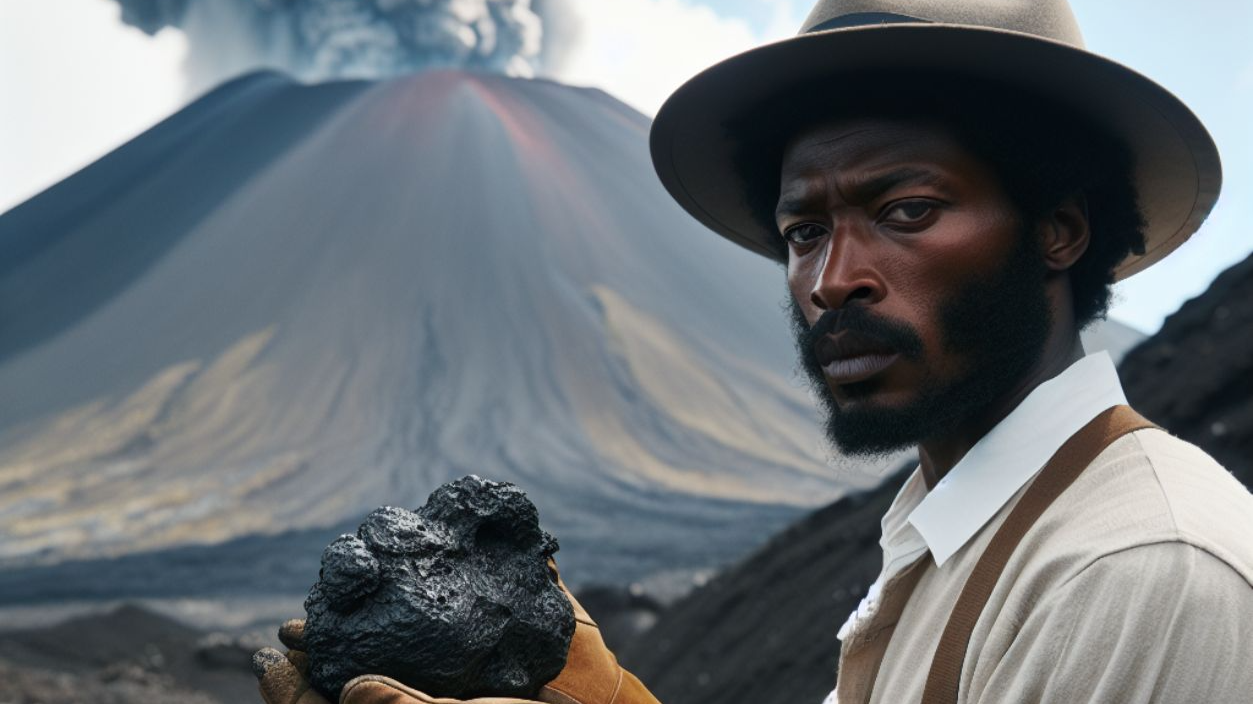
The Day Vesuvius Darkened The Sky
On August 24, 79 AD, Mount Vesuvius erupted with such force that the midday sky turned pitch black. Ash and pumice blanketed the Bay of Naples region, casting an eerie darkness for miles. Ancient eyewitness accounts, like that of Pliny the Younger, describe a choking cloud and daylight fading into night.
How Herculaneum Was Swallowed Alive
Unlike Pompeii, which was smothered in falling ash, Herculaneum was consumed by pyroclastic surges—superheated clouds of gas and debris that rushed downhill at nearly 100 miles per hour. These flows buried the coastal town in up to 75 feet of volcanic material, sealing streets and homes in an instant.
 Diego Delso, Wikimedia Commons
Diego Delso, Wikimedia Commons
When Ash Replaced Air
Residents had no time to flee. Within minutes, toxic gases suffocated them as ash replaced breathable air. The first surges were so hot they boiled body fluids and instantly killed anyone exposed. Entire families died where they stood, locked in place by the suffocating wave of superheated volcanic ash and gas.
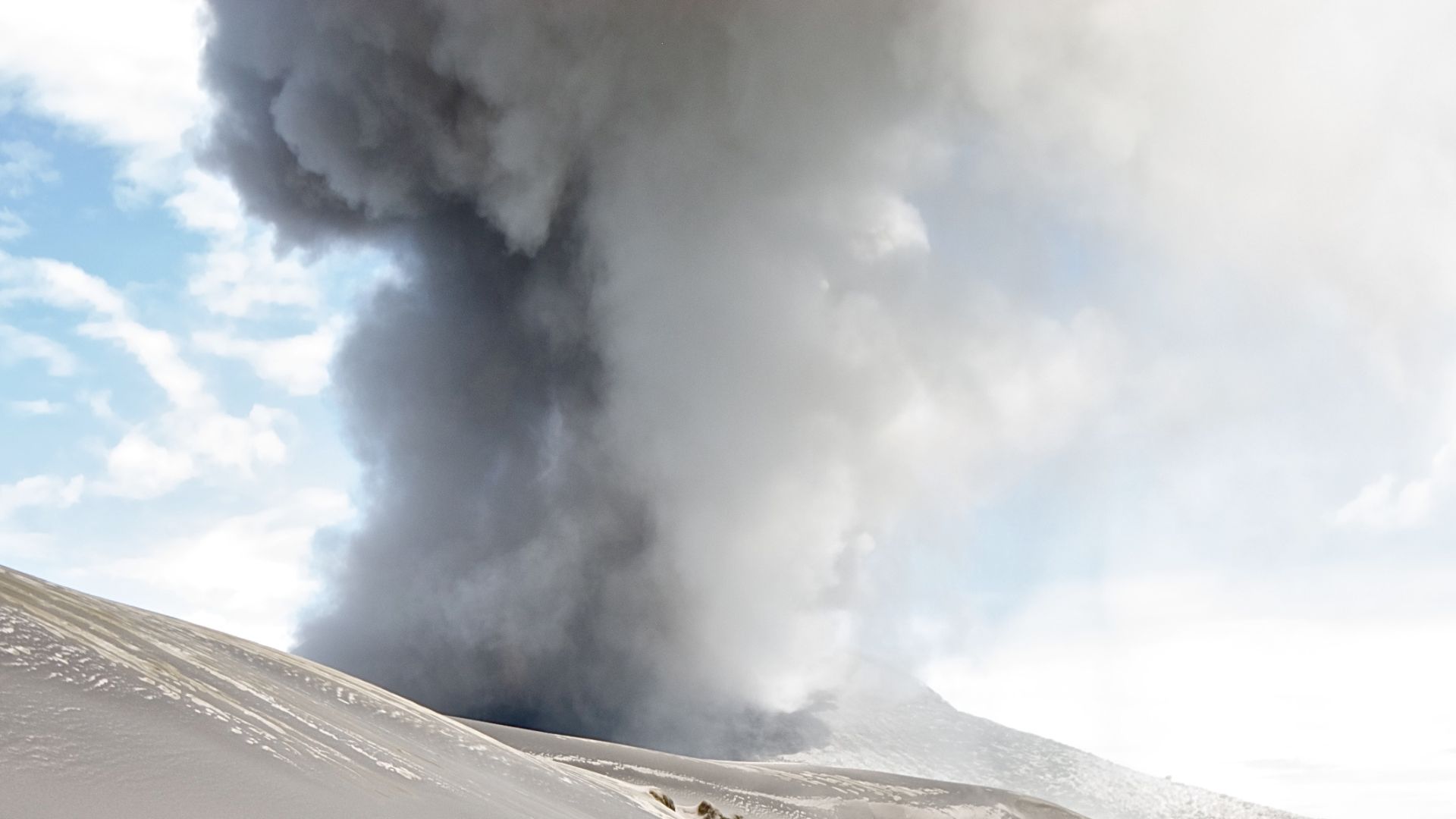 tarotastic on Flickr, Wikimedia Commons
tarotastic on Flickr, Wikimedia Commons
A City Frozen In Horror
Herculaneum became a ghost city overnight. While the buildings remained eerily intact, everything living inside was extinguished. Unlike the plaster casts seen in Pompeii, bodies in Herculaneum carbonized—bones charred and soft tissues vanished. The sudden thermal shock preserved grim moments and captured a frozen chapter of Roman life in shocking detail.
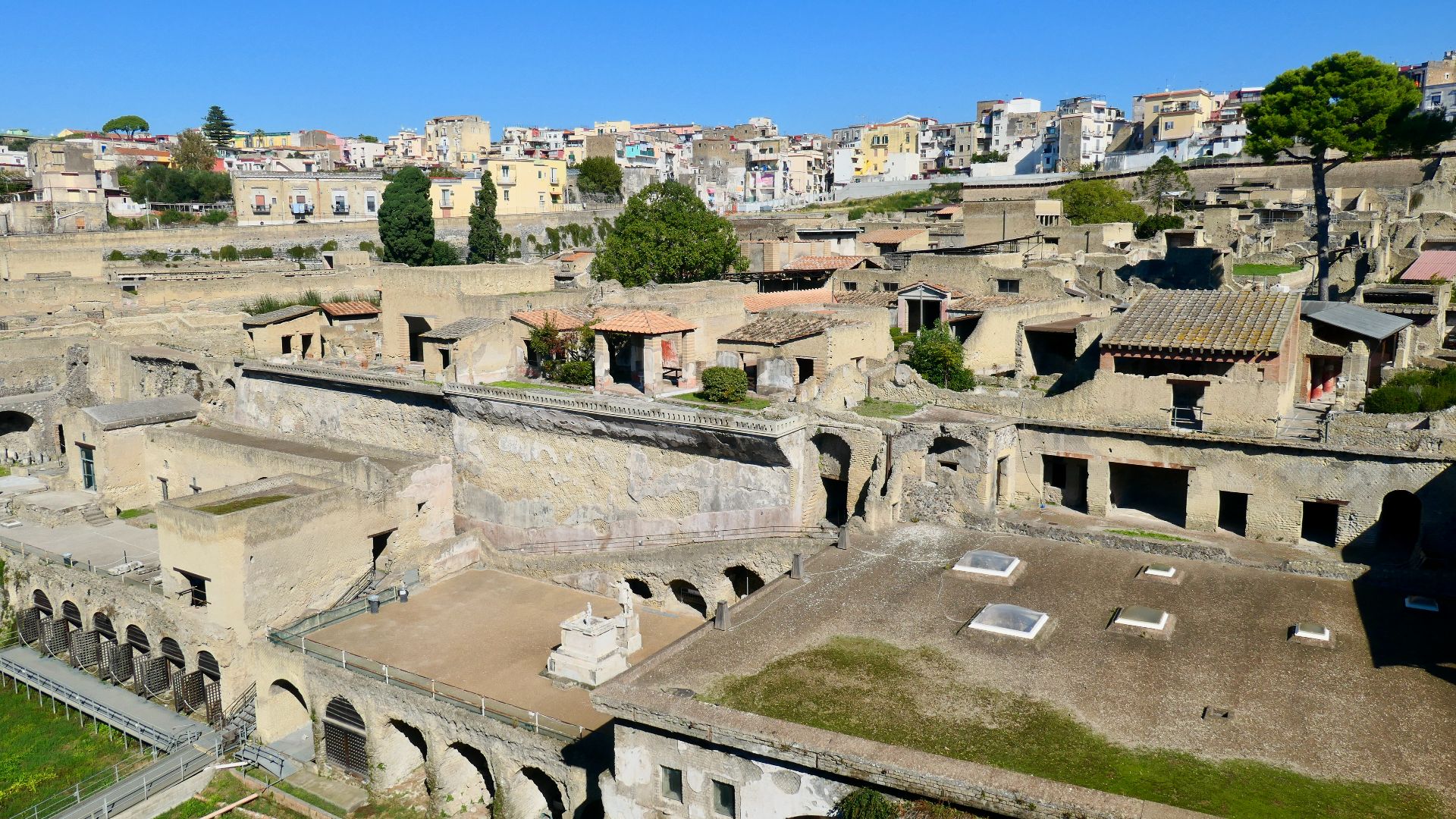 Bruno Rijsman, Wikimedia Commons Centuries Of Silence Beneath The Rock
Bruno Rijsman, Wikimedia Commons Centuries Of Silence Beneath The Rock
For almost 1,600 years, Herculaneum remained entombed under hardened volcanic deposits. It wasn’t rediscovered until the 18th century when workers digging a well accidentally struck marble. Excavations began slowly and often destructively. Over time, archaeologists uncovered remarkably preserved mosaics and skeletons—silent remnants of a civilization cut short.
Digging Through Layers Of Despair
Excavating Herculaneum has revealed haunting scenes of the final moments. Layers of ash and debris up to six stories high had to be tunneled through. Unlike Pompeii’s broader exposure, Herculaneum’s remains lay deeper and better preserved but more difficult to reach. Each discovery is a grim revelation of a tragedy long hidden.
 Bruno Rijsman, Wikimedia Commons
Bruno Rijsman, Wikimedia Commons
The Hidden Temple Of The Emperor’s Cult
One key site was the Collegium Augustalium, a richly decorated hall where officials worshipped Emperor Augustus. The structure featured intricate mosaics and marble columns. It also became the resting place of one unknown man, whose remains—discovered inside—became central to one of archaeology’s most unsettling discoveries.
 Diego Delso, Wikimedia Commons
Diego Delso, Wikimedia Commons
A Body Found Where Faith Once Gathered
In the heart of this ceremonial space, archaeologists found a skeleton face-down on a wooden bed. The man may have served the imperial cult, perhaps as a caretaker or priest. His body was instantly carbonized by the pyroclastic flow. It offers a rare opportunity to study how life ended inside a sacred Roman institution.
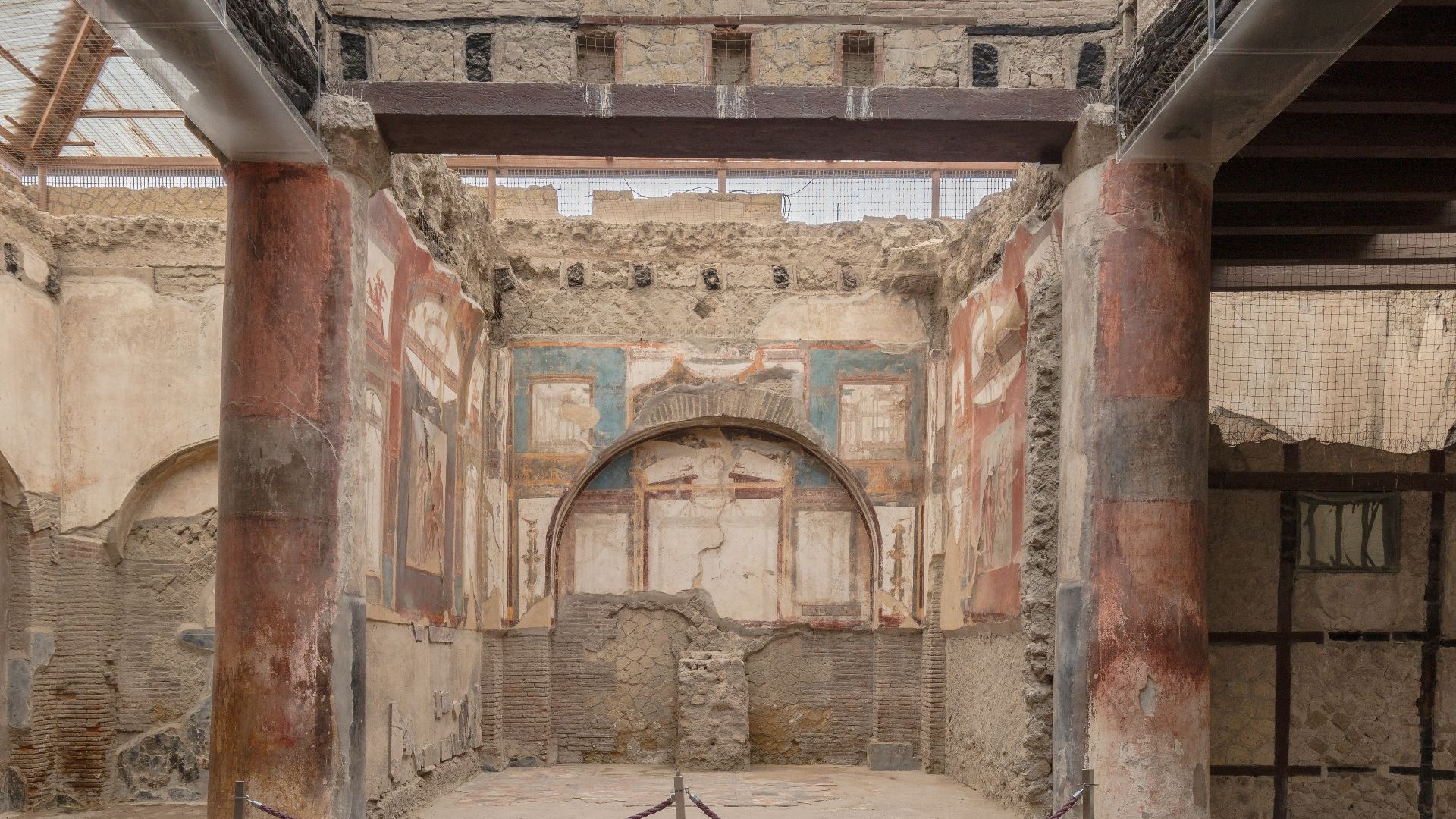 Diego Delso, Wikimedia Commons
Diego Delso, Wikimedia Commons
Lying Still On A Charred Wooden Bed
The wooden bed beneath the victim had been turned to charcoal, remarkably preserved by the intense heat. Its position indicated the man was either asleep or took cover too late. The surrounding melted furniture and blackened walls hinted at temperatures so fierce they could ignite organic matter within seconds.
The Mystery Of The Unknown Man
Despite the detailed context, the identity of the man remains a mystery. No personal belongings or inscriptions confirmed his name or role. Yet his preserved skeleton and the coming forensic revelations suggest he played a unique part in Herculaneum’s story and in the scientific story yet to unfold.
Clues Encased In Volcanic Debris
The debris surrounding the skeleton offered critical forensic clues. Melted wood and fused tiles suggested an eruption temperature exceeding 500°C. These conditions created a rare microenvironment—an archaeological time capsule—preserving materials that would normally decay. Each fragment recovered helped reconstruct the rapid sequence of destruction in startling detail.
Too Sudden For Escape
This man showed no sign of fleeing. The unbroken positioning of the limbs and lack of movement in the room confirmed instantaneous death. Forensic specialists believe the pyroclastic surge incinerated him within seconds by boiling bodily fluids and halting every biological process in an eruption-generated furnace.
 IAEA Imagebank, Wikimedia Commons
IAEA Imagebank, Wikimedia Commons
What Heat Does To The Human Body
At temperatures above 480°C, human tissues vaporize, and fat ignites. Muscles contract violently, often causing postures to freeze in unnatural ways. Bones fracture and shrink from dehydration. In rare cases like this one, the brain can liquefy or, incredibly, vitrify. It changes under extreme heat into a black, glass-like substance.
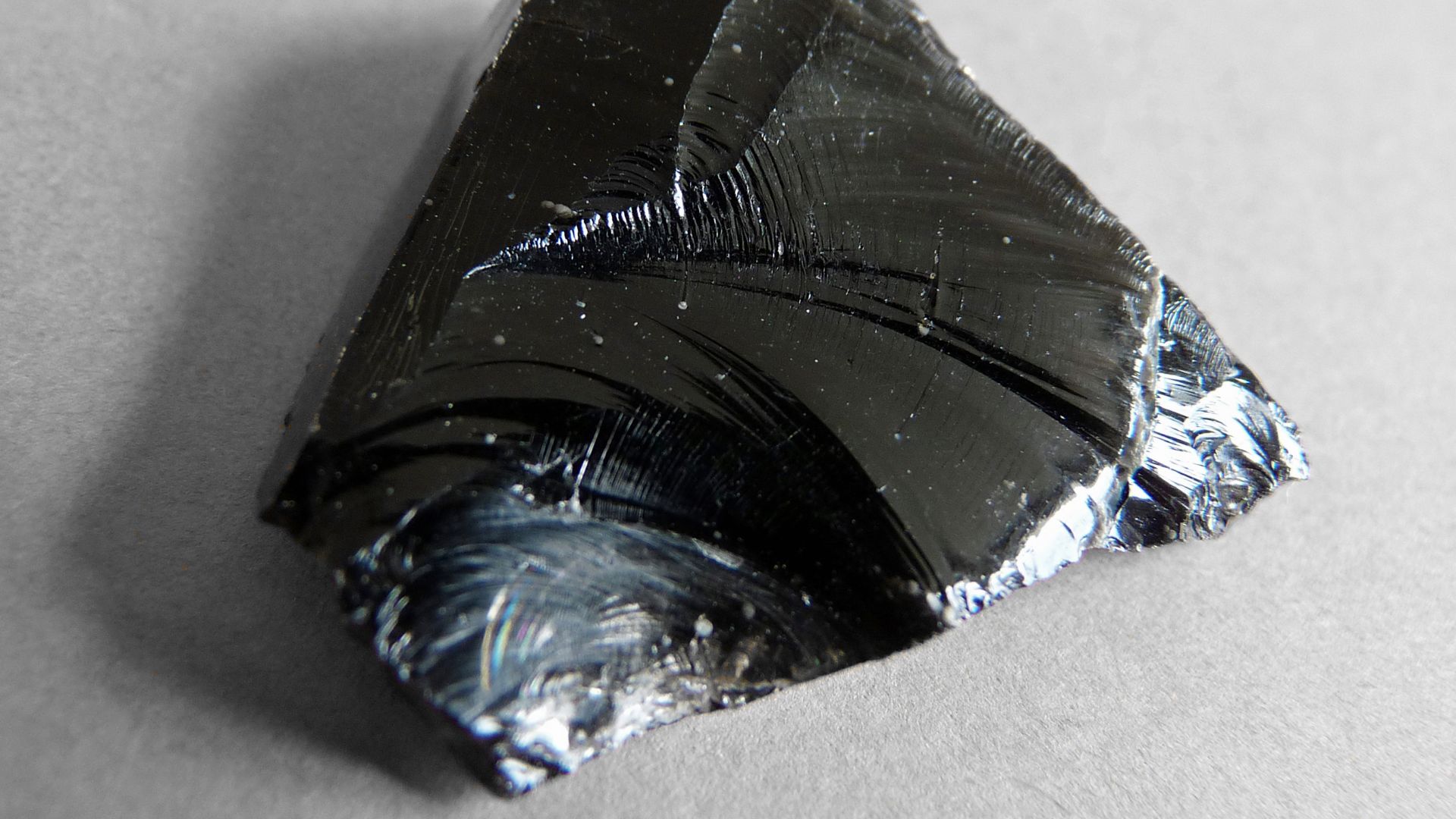 Ji-ElleIt feels nice and warmIt feels like a love storm, Wikimedia CommonsTemperatures That Melt Bone And Flesh
Ji-ElleIt feels nice and warmIt feels like a love storm, Wikimedia CommonsTemperatures That Melt Bone And Flesh
The Collegium’s enclosed space likely intensified the thermal effect. Analysis of nearby charred wood suggested the interior reached 500–520°C. These brutal conditions melted roofing materials and carbonized beams. In such a furnace, bone becomes brittle, and internal organs break down in less than a minute.
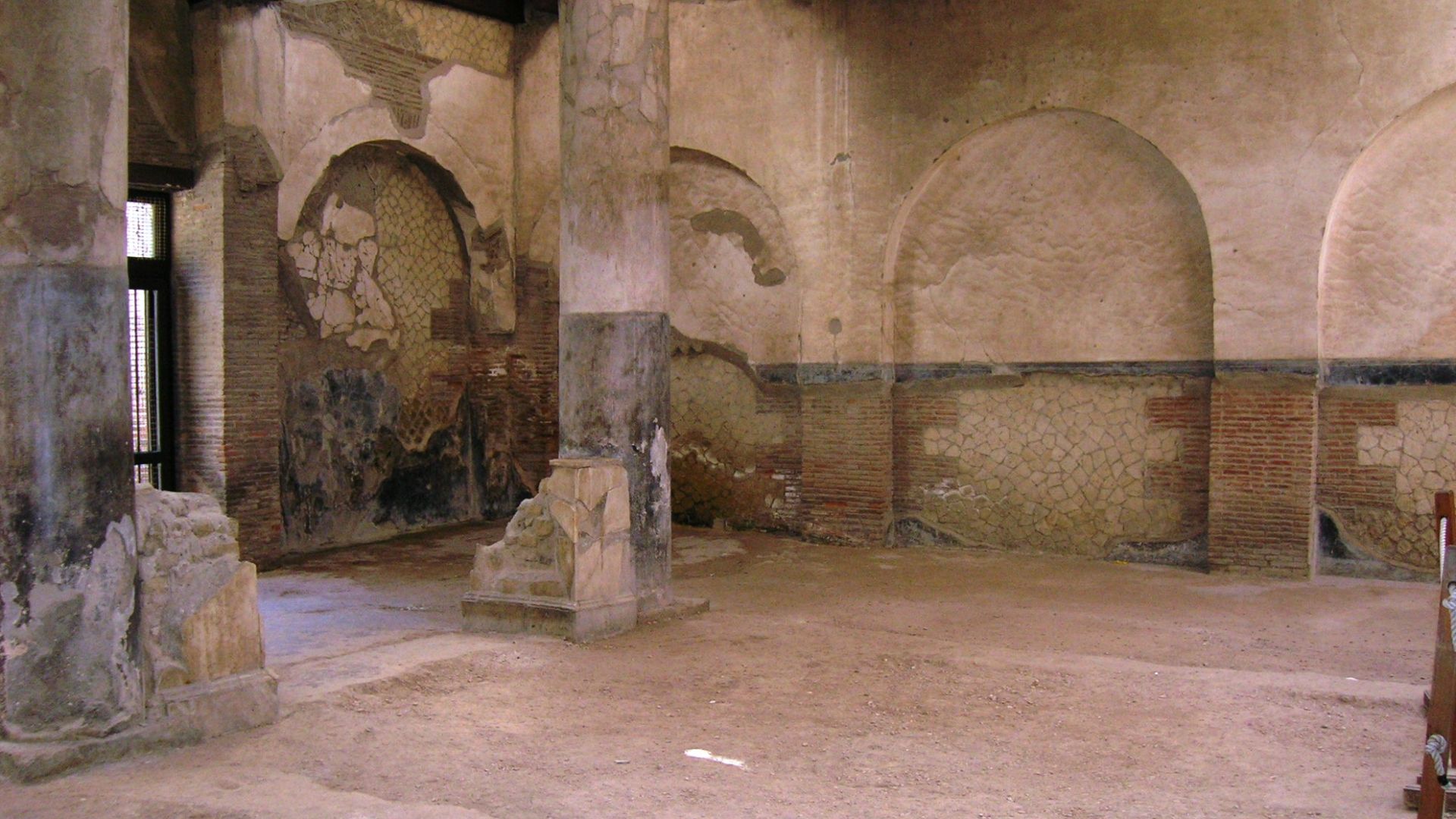 Mentnafunangann, Wikimedia Commons
Mentnafunangann, Wikimedia Commons
When Fire Meets Brain Tissue
Brain tissue is mostly fat and water, ordinarily the first to decompose. But in this case, researchers found shiny, black, glassy fragments inside the skull. These weren’t remnants of tools or volcanic glass. Chemical analysis confirmed it: the extreme heat had vitrified the man’s brain, turning it into glass-like organic matter.
The Phenomenon Of Vitrification
Vitrification occurs when biological tissue is exposed to intense heat and then rapidly cooled, causing it to harden into a glass-like form. This process is almost unheard of in human remains. The unique conditions of the eruption, particularly in Herculaneum’s sealed spaces, created the precise thermal shock needed for vitrification.
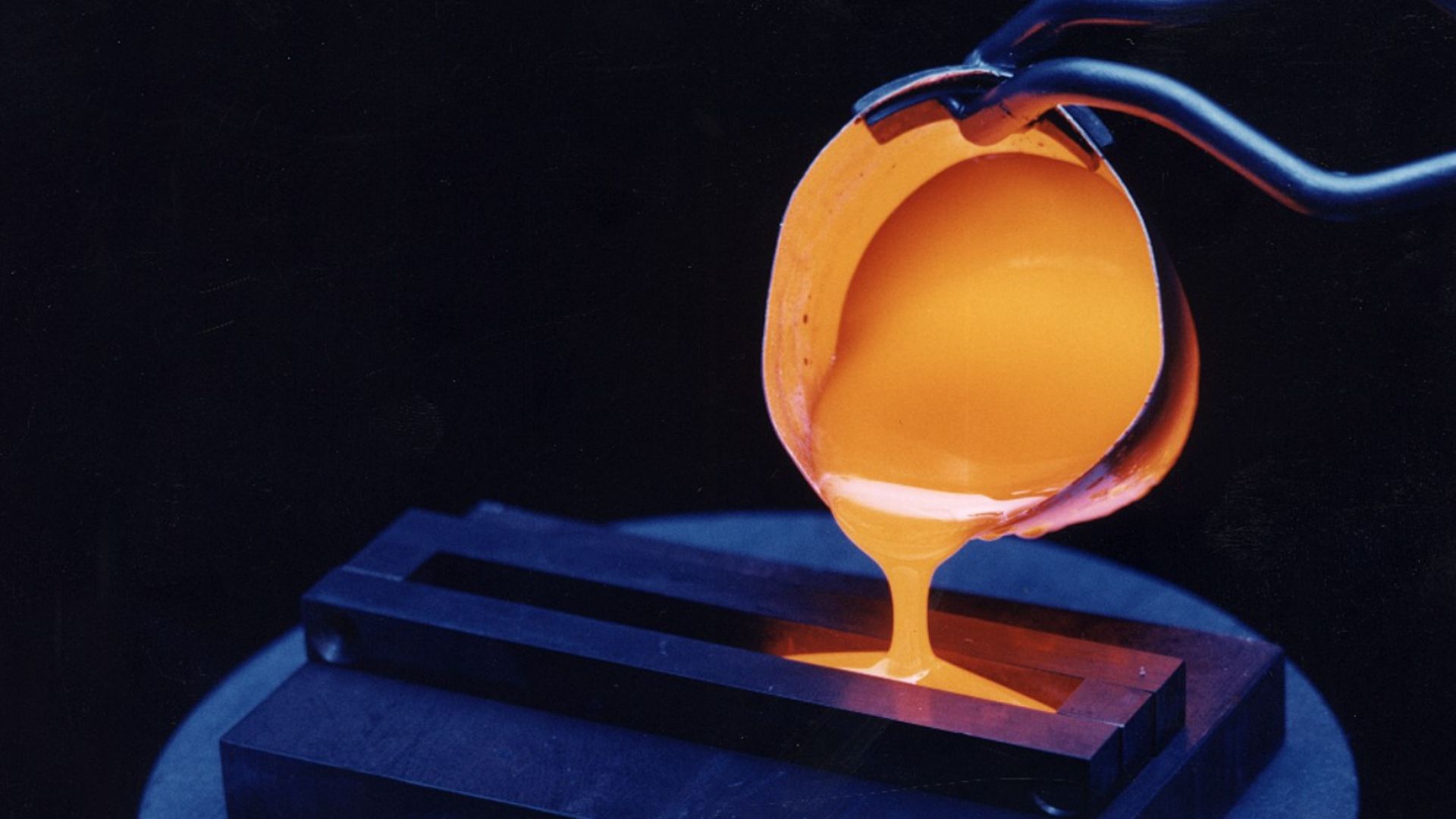 Courtesy: w:Pacific Northwest National Laboratory., Wikimedia Commons
Courtesy: w:Pacific Northwest National Laboratory., Wikimedia Commons
A Brain That Became Glass
Electron microscopy and spectrometry revealed protein structures and fatty acids consistent with brain tissue encased in a glassy black sheen. This confirmed that the fragments found inside the skull weren’t random debris but a vitrified brain—the only one ever documented in archaeological history from a natural disaster of this magnitude.
 Tadeas Bednarz, Wikimedia Commons
Tadeas Bednarz, Wikimedia Commons
The Shimmer That Changed Everything
What first looked like hardened ash caught researchers’ attention because it shimmered under direct light. That glint, subtle but unusual, sparked deeper testing. Archaeologists discovered what redefined the limits of preservation and drew worldwide attention. It’s proof that even the most delicate organs could survive, albeit transformed, under extraordinary geological violence.
Scientists Take A Closer Look
A multidisciplinary team of archaeologists and anthropologists collaborated to examine the find. Using scanning electron microscopy and protein sequencing, they identified glial tissue markers and fatty compounds. A report in the New England Journal of Medicine provided definitive evidence of vitrified neural matter in situ.
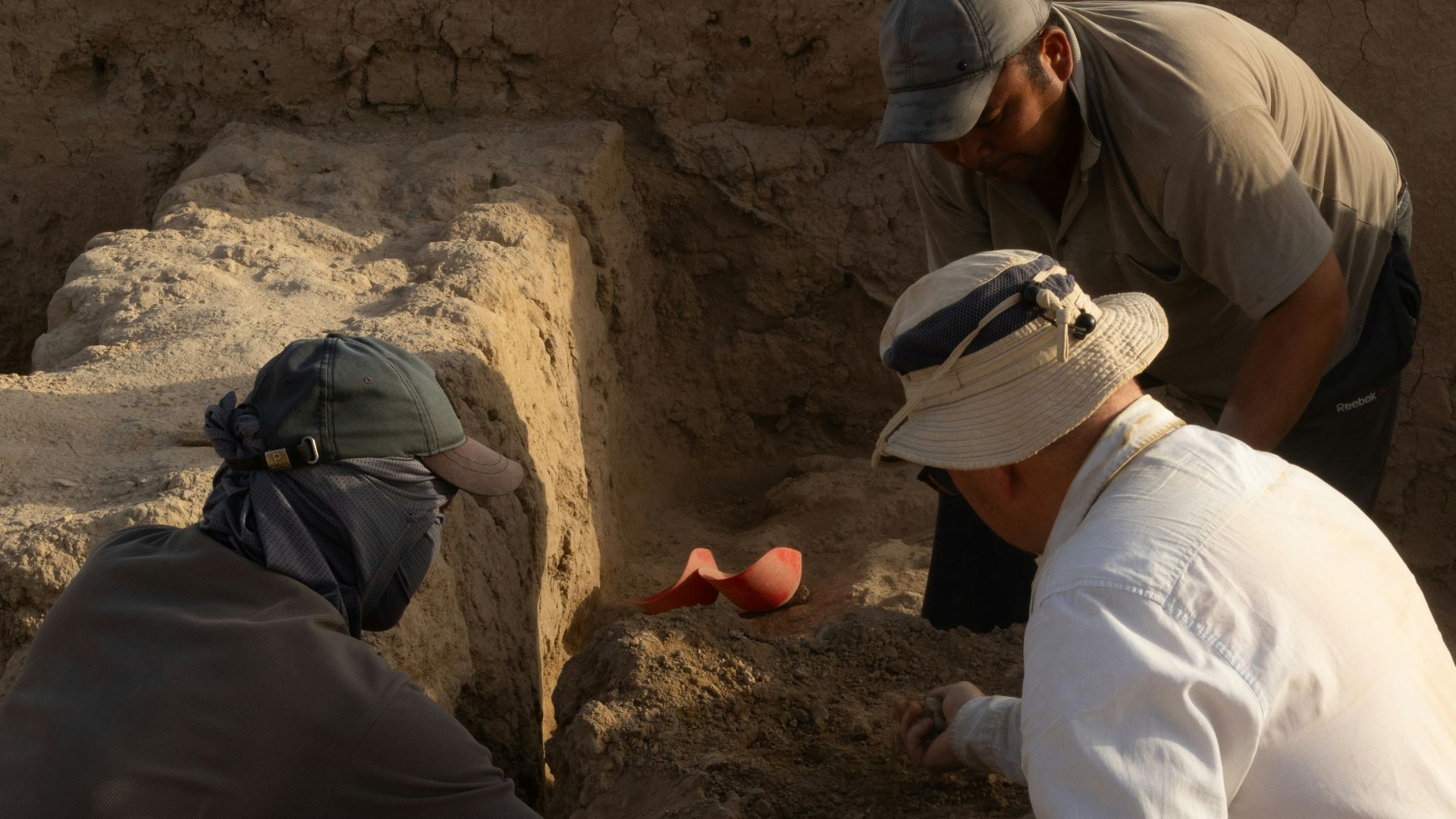 Aleksander Stypczynski, Unsplash
Aleksander Stypczynski, Unsplash
Under The Microscope: A Shocking Revelation
Through high-resolution scans, scientists observed fine structural remnants within the vitrified mass. These are microscopic channels resembling axons and neural filaments. The preservation was unprecedented. Never before had researchers seen organic material from ancient Rome in such high definition, offering a unique glimpse into both death by eruption and ancient human biology.
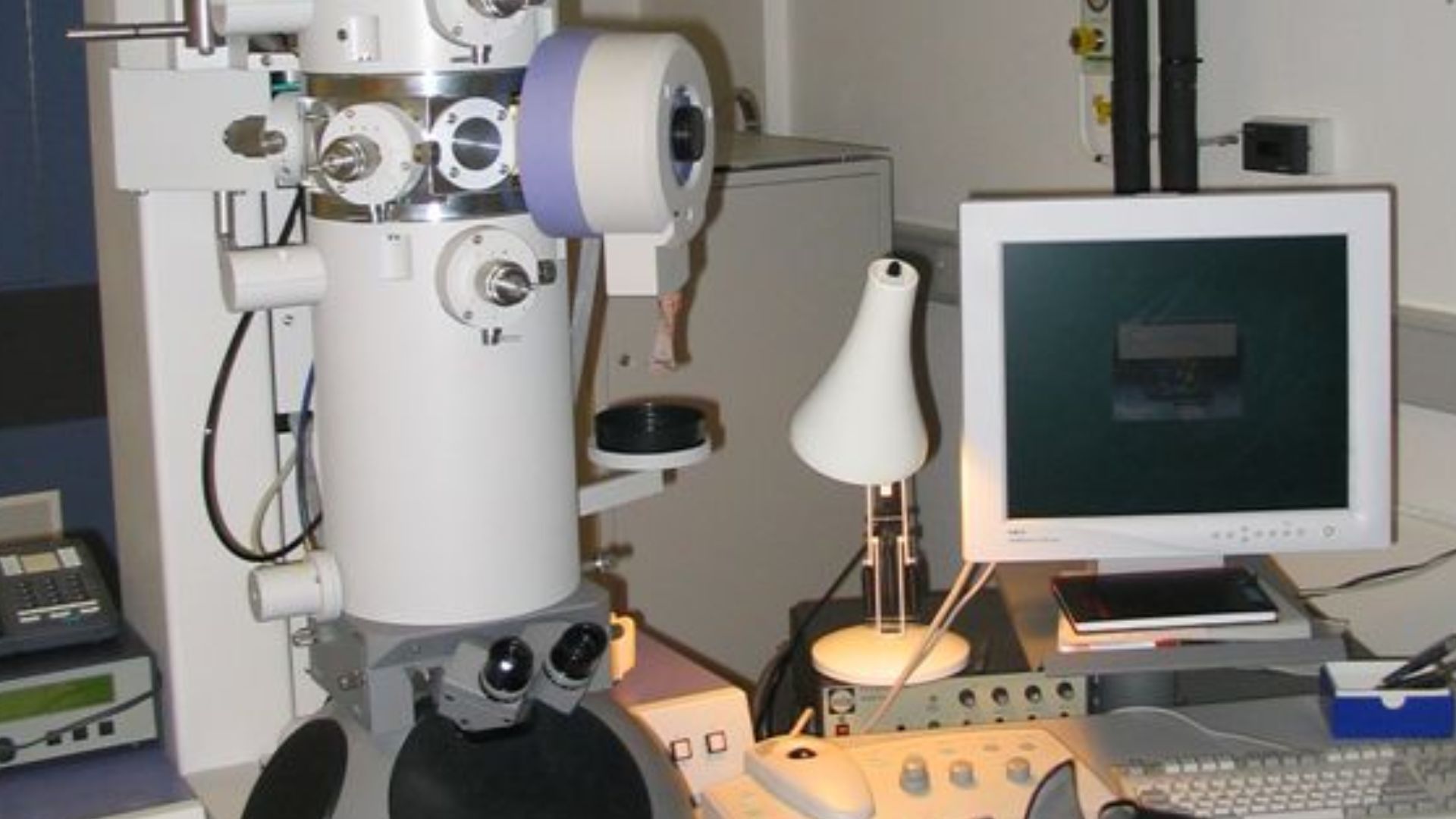 David J Morgan from Cambridge, UK, Wikimedia Commons
David J Morgan from Cambridge, UK, Wikimedia Commons
Proteins, Fatty Acids, And Human Remains
Chemical analysis confirmed the presence of proteins typical of human brain tissue, including those related to the central nervous system. Fatty acids consistent with brain lipids were also detected. These biological markers ruled out environmental contamination. This confirms that the fragments were once part of a functioning human brain, now sealed in glass.
 Julz0047 (talk), Wikimedia Commons
Julz0047 (talk), Wikimedia Commons
Confirming The Unthinkable
The scientific community approached the claim with caution. Replicable tests and comparative tissue analysis all backed the findings. This was no misidentification. It was a brain transformed, not by time, but by heat and ash. This is a unique case that rewrote the possibilities of archaeological preservation through catastrophe.
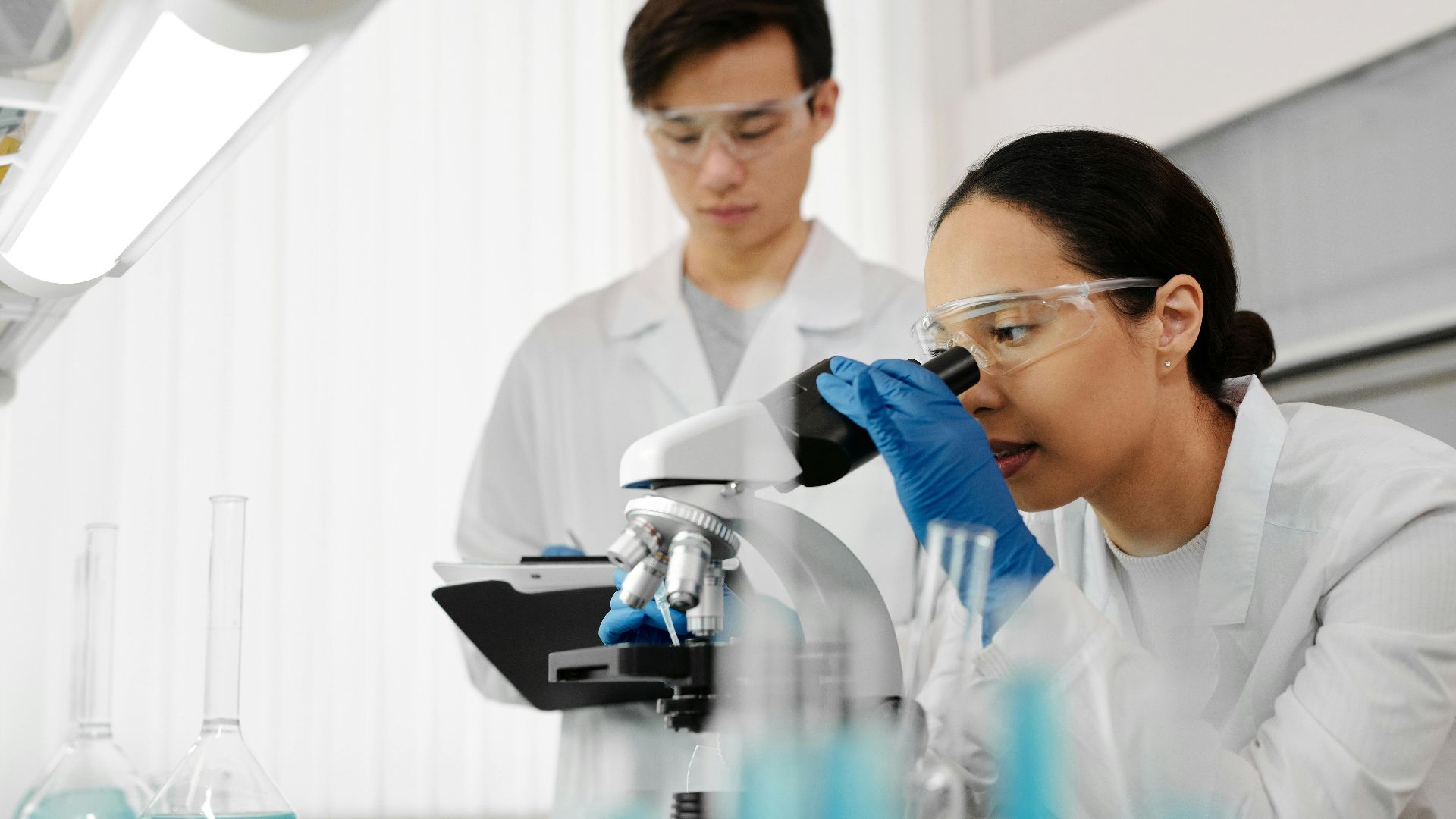 Aleksander Stypczynski, Unsplash
Aleksander Stypczynski, Unsplash
A Brain Preserved By Catastrophe
Most ancient remains decay beyond recognition, especially soft tissue. But this case inverted the norm: the catastrophe preserved what nature usually erases. Instead of being reduced to dust, this brain’s structure fossilized in a glassy form. It allows researchers to study neural matter nearly two thousand years after its destruction.
The First Of Its Kind In Archaeology
No other archaeological site has yielded vitrified human brain tissue. The rarity lies in the conditions—an intense, sudden heat wave followed by rapid cooling and enclosure. This was a biological anomaly born from geological terror. It’s a benchmark case in both archaeological preservation and forensic anthropology.
Why This Discovery Matters
This finding deepens our understanding of human vulnerability during natural disasters. It also opens new questions in forensic science, such as how extreme conditions affect soft tissue. For archaeologists, it proves that even the seemingly ephemeral can endure under the right deadly conditions.
Peering Into A Mind Lost In 79 AD
The vitrified brain offers a ghostly outline of a life extinguished in seconds. Researchers could trace neural pathways and cellular components. They reveal the final biological state of a man caught between devotion and disaster in the final hours of Herculaneum’s existence.
 Rhoda Baer (Photographer), Wikimedia Commons
Rhoda Baer (Photographer), Wikimedia Commons
How Rapid Cooling Trapped A Tragedy
Vitrification required more than heat; it demanded abrupt cooling. The pyroclastic surge delivered intense thermal shock, but as the flow subsided, it cooled rapidly. This locked organic material in place. This unlikely combination of fury and finality created an ideal crucible for fossilizing what nature would usually erase without a trace.
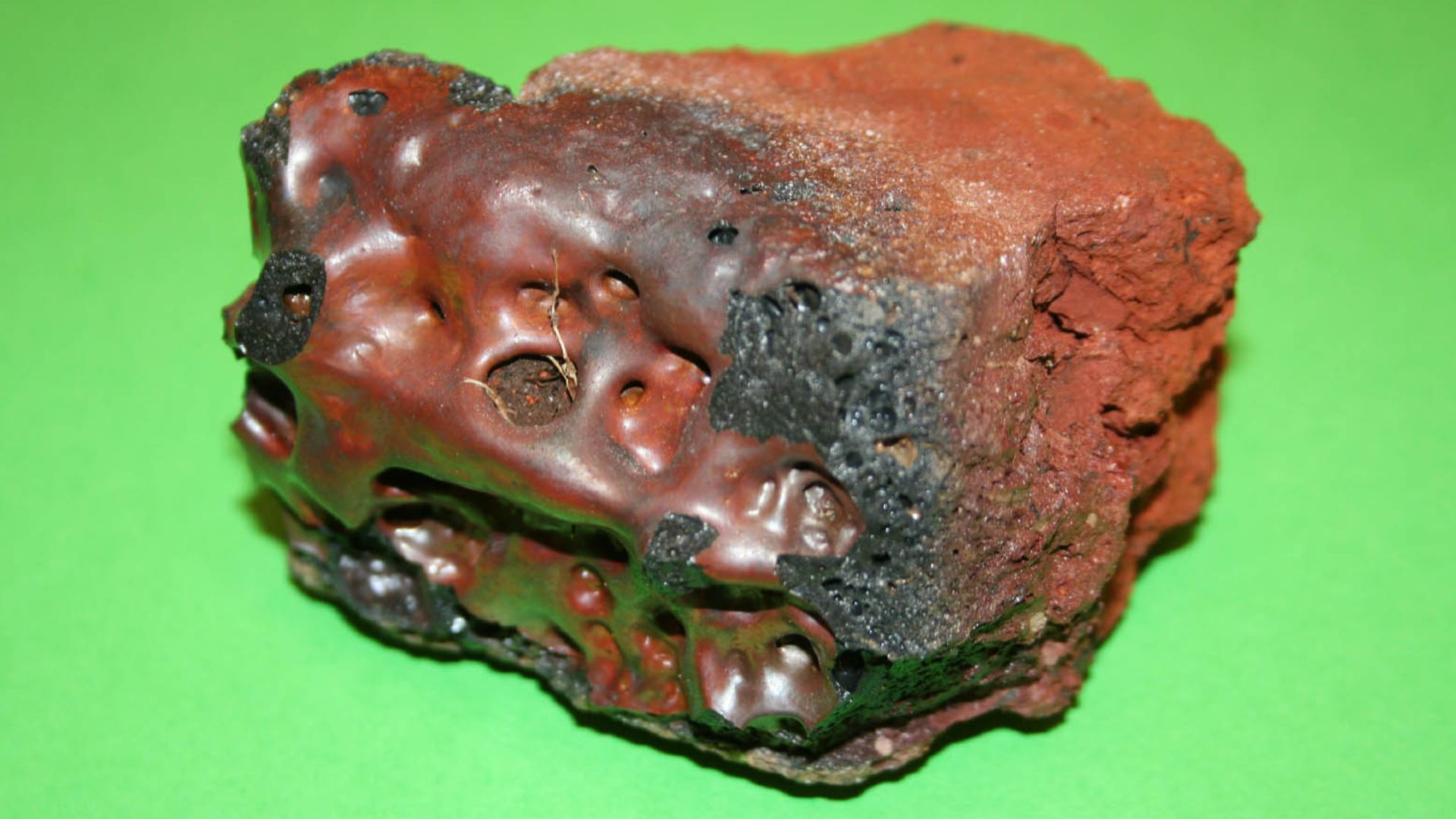 Nigel Aspdin, Wikimedia Commons
Nigel Aspdin, Wikimedia Commons
The Body That Burned, Then Froze
Thermal decomposition began almost instantly, but so did preservation. The body burned, liquefied, and, in the same violent sequence, cooled. This dual action—destruction followed by rapid solidification—produced not only carbonized bones but an encased neural relic. It’s a paradox: the man’s body vanished, yet his brain partially endured.
 Rando Tuvikene, Wikimedia Commons
Rando Tuvikene, Wikimedia Commons
A Tale Only Herculaneum Could Tell
Pompeii revealed frozen silhouettes in ash, but Herculaneum preserved chemistry. Its unique burial conditions created a natural vault. Here, organic matter is fossilized with forensic clarity. The vitrified brain is one of many ways Herculaneum continues to reveal untold truths about the ancient dead.
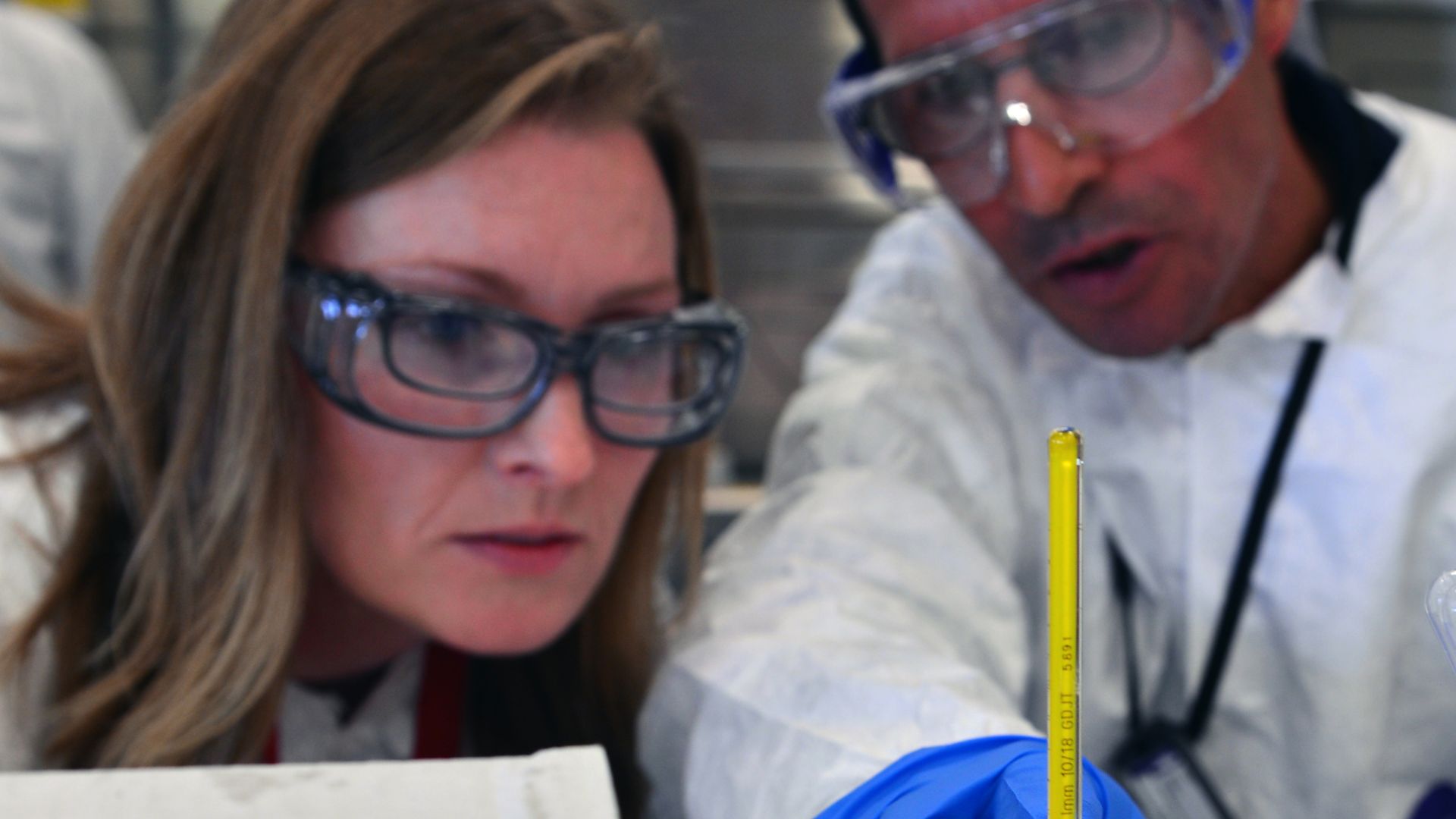 IAEA Imagebank, Wikimedia Commons
IAEA Imagebank, Wikimedia Commons
Vesuvius’s Unique Brand Of Violence
Unlike lava flows that destroy gradually, Vesuvius produced pyroclastic surges of gas and rock hotter than molten lead. These flows obliterated life before people could react. At Herculaneum, the violence was both instantaneous and preserving. It turned homes into tombs and living tissue into blackened, sometimes glassy, remains.
 How Herculaneum Is Better Preserved Than Pompeii | Herculaneum Uncovered | Timeline by World History DocumentariesPompeii’s Ash, Herculaneum’s Heat
How Herculaneum Is Better Preserved Than Pompeii | Herculaneum Uncovered | Timeline by World History DocumentariesPompeii’s Ash, Herculaneum’s Heat
Though both cities fell to Vesuvius, their fates diverged. Pompeii was buried in ash and pumice, which preserve body shapes but not flesh. Herculaneum, closer to the volcano’s base, was consumed by hotter pyroclastic flows. This thermal intensity vaporized bodies yet preserved wood, food, and, uniquely, a man’s vitrified brain.
Pyroclastic Flows: Nature’s Deadliest Breath
Pyroclastic flows move fast—over 100 mph—and carry searing heat, often above 800°C. They combine gas and microscopic ash particles that incinerate everything in their path. For Herculaneum’s residents, these surges produced one of the deadliest types of volcanic events known to science and history.
The Moment Between Life And Nothing
The skeleton’s posture and vitrified brain suggest the end came in milliseconds. There was no sign of escape or defensive wounds. This was not a slow suffocation but a flash of thermal violence that shut down the body instantly. The transition from living to lifeless was nearly too fast to register.
 David E. Wieprecht, Wikimedia Commons
David E. Wieprecht, Wikimedia Commons
Can Vitrification Happen Again?
Vitrified brains are extraordinarily rare due to the unique balance of heat and cooling required. While technically possible during nuclear explosions or industrial accidents, nature rarely replicates such perfect storm conditions. That’s what makes the find in Herculaneum nearly impossible to reproduce in modern forensic or archaeological contexts.
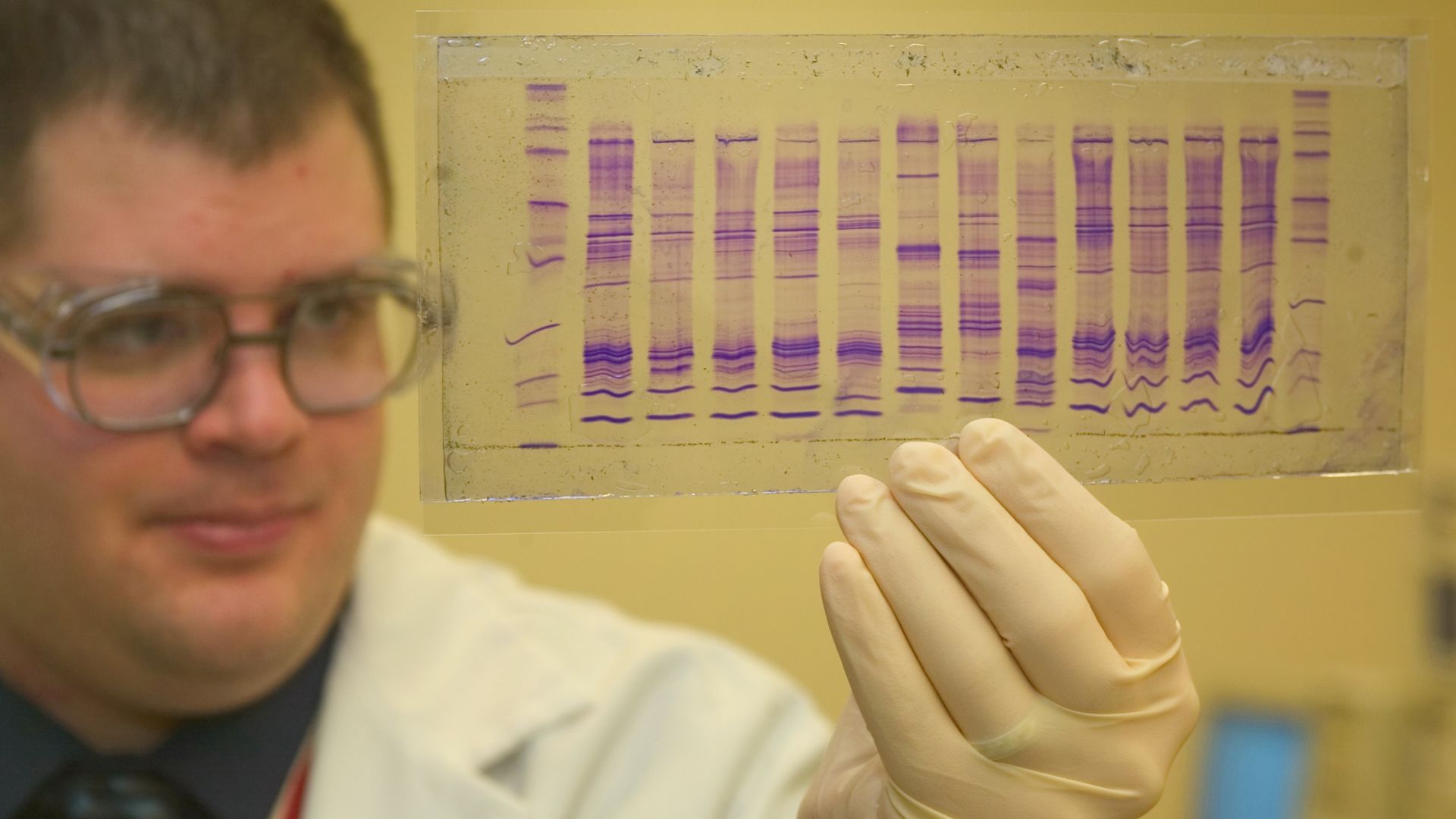 James Tourtellotte, photo editor of CBP Today[1], Wikimedia Commons
James Tourtellotte, photo editor of CBP Today[1], Wikimedia Commons
When Biology Meets Geology
This case sits at the intersection of life science and earth science. Geological forces altered biology at the molecular level. Understanding how volcanic heat transformed soft tissue deepens volcanology and forensic research and proves that catastrophic geology can sometimes preserve life’s most fragile remnants.
 Keirth Pomakis, Wikimedia Commons
Keirth Pomakis, Wikimedia Commons
What We Learn From A Glass Brain
This discovery bridges millennia by offering a rare glimpse into ancient human physiology. The preserved brain tissue allows scientists to study Roman-era neural architecture and better understand how extreme environments affect organic matter. It challenges assumptions about decay and proves that even the most fragile tissues can survive under catastrophic conditions.
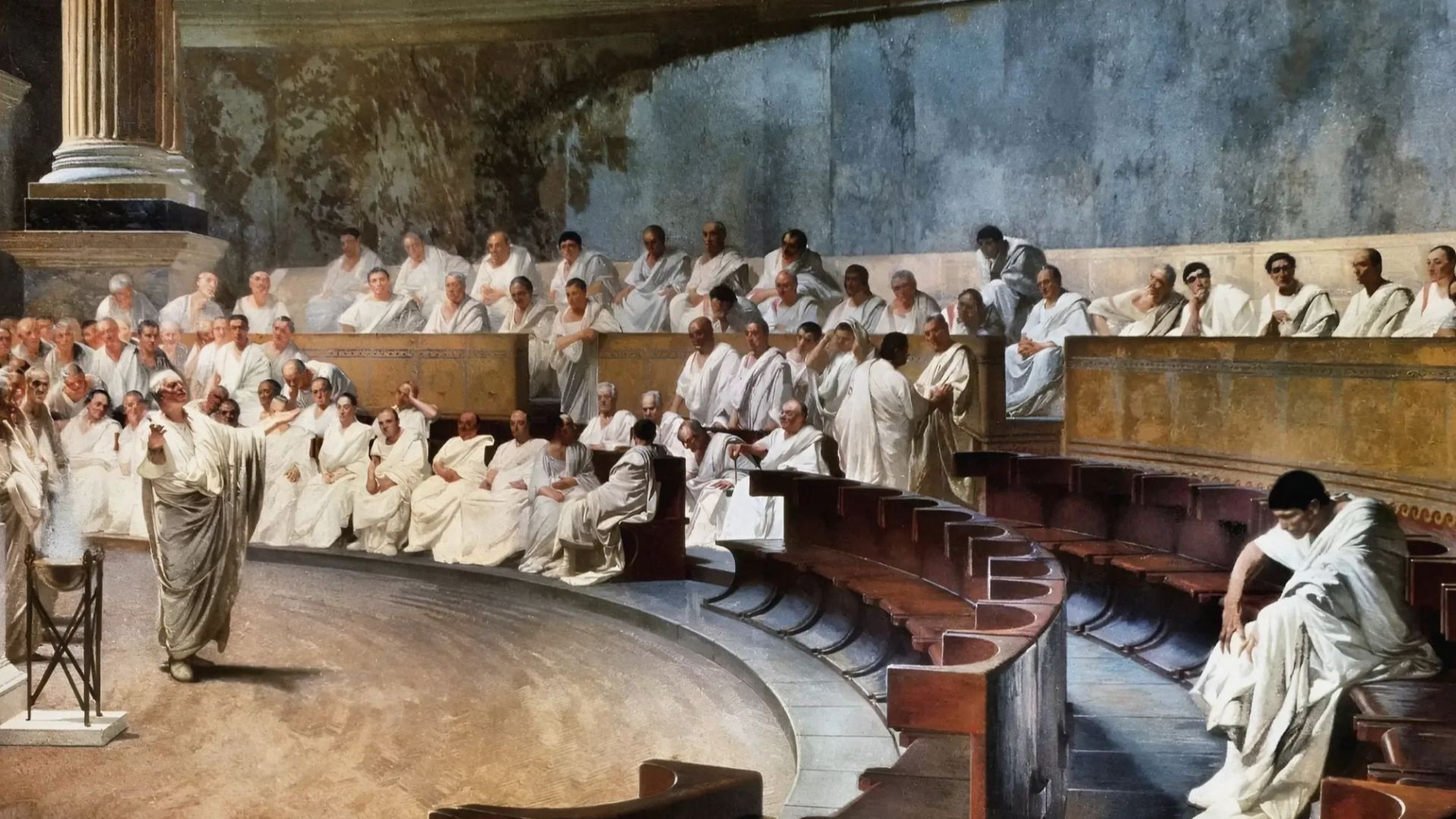 Cesare Maccari, Wikimedia Commons
Cesare Maccari, Wikimedia Commons
Scientific Curiosity Vs. Human Dignity
Handling ancient human remains invites ethical scrutiny. While the vitrified brain is scientifically invaluable, it was once part of a living person. Researchers must balance discovery with respect to ensure that scientific advances do not overshadow the human cost etched into every fragment of vitrified tissue and carbonized bone.
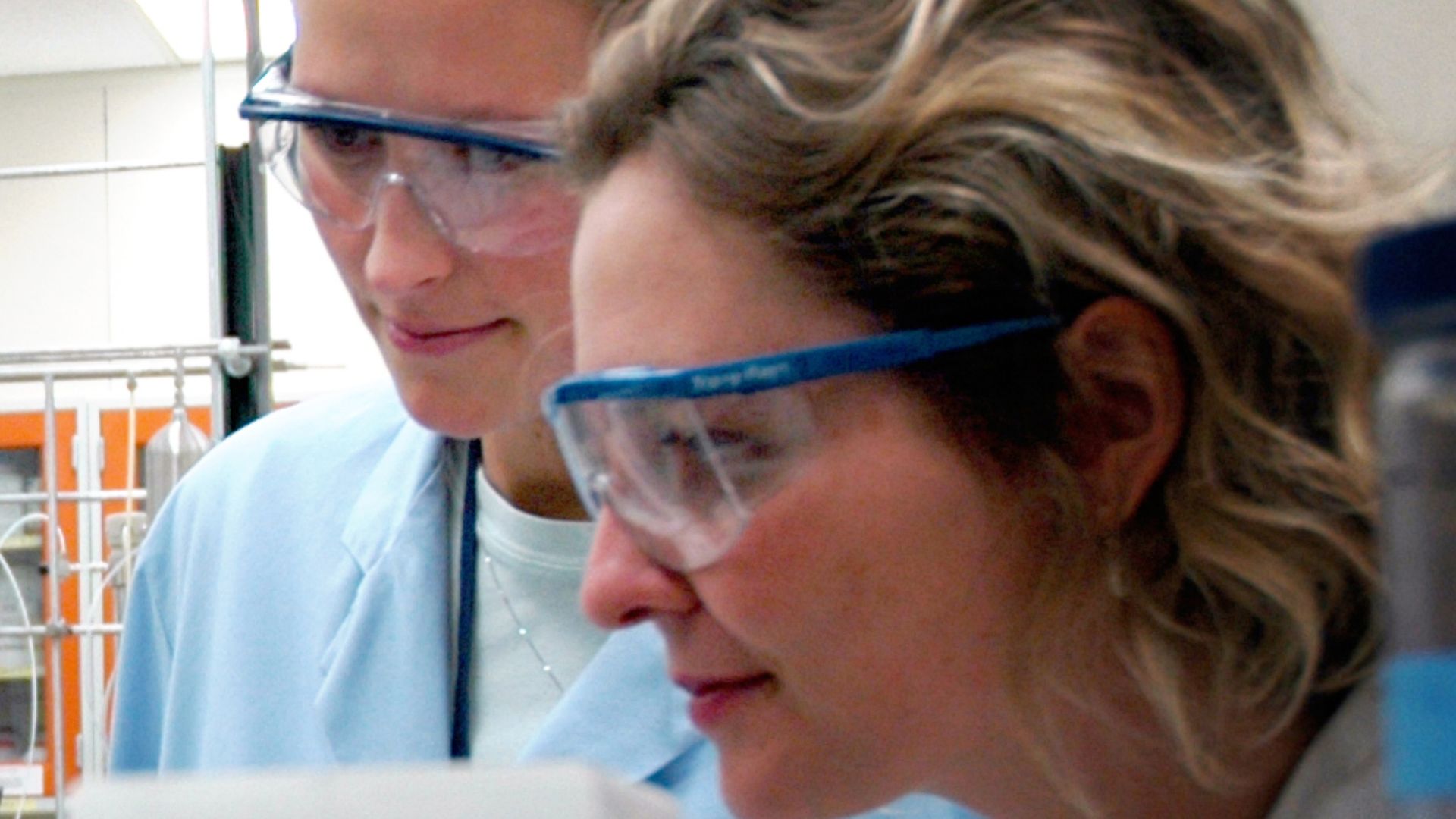 Idaho National Laboratory, Wikimedia Commons
Idaho National Laboratory, Wikimedia Commons
Ethics Of Studying The Dead
Archaeology often walks a fine line between investigation and intrusion. In this case, ethical debates center around consent and cultural context. How much should be tested? How should findings be displayed? As science pushes boundaries, these questions grow louder, especially when the body tells a story without permission.
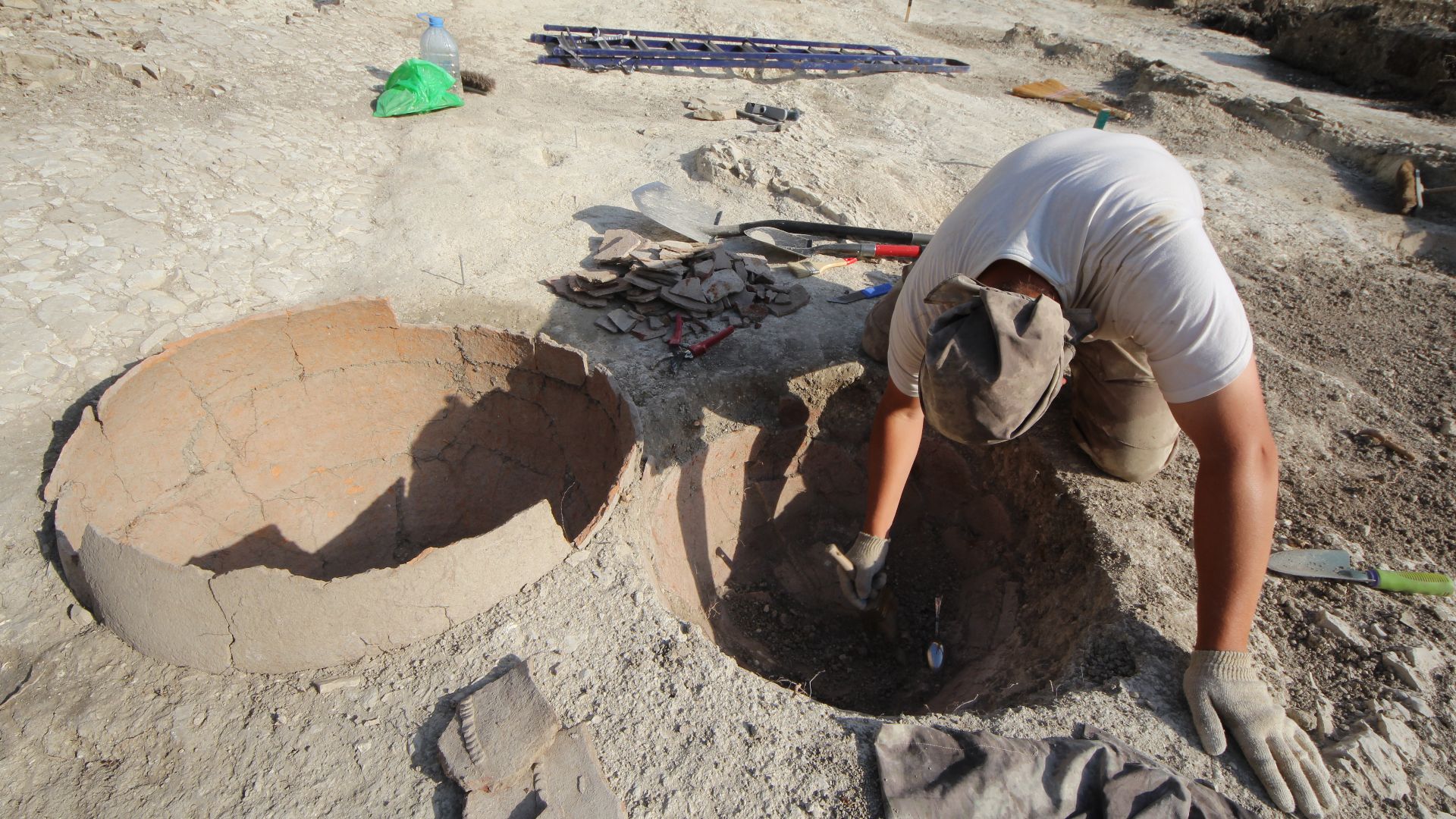 MariyaShubina, Wikimedia Commons
MariyaShubina, Wikimedia Commons
Turning Horror Into Human Insight
Despite the tragedy, this find transforms horror into knowledge. The violence that ended one life has illuminated ancient urban living and the science of preservation. What was once devastation now serves as a teaching tool that helps society confront natural disasters and the fragile legacy of human life.
The Role Of Museums In Telling The Story
Museums play a vital role in presenting discoveries like this one with accuracy and care. Exhibits must balance education with empathy by offering context while honoring the individual. The vitrified brain, if ever displayed, challenges curators to show more than spectacle. It demands they share the human story sealed in glass.
Why The World Was Dazzled
Global fascination surged because the find fused science and history into one object: a human brain turned to glass by nature’s wrath. This wasn’t a statue or mosaic. It was someone’s thoughts, frozen midstream and pulled into modern consciousness by heat and chance.
The Most Intimate Look At An Ancient Crisis
This brain provides an emotional closeness rarely found in archaeology. Most archaeological remains feel distant and depersonalized. But here, neural tissue survived to remind us that the person who died had fears and thoughts. They obliterated in seconds yet immortalized in a fragment smaller than a fingernail.
Could There Be More Like Him?
Herculaneum’s lower layers remain largely unexcavated. Many rooms are still buried beneath hardened volcanic rock. Given the conditions that preserved this brain, it’s plausible that others are waiting in similar pockets of extreme heat and rapid cooling. Future discoveries could deepen our understanding of ancient life and the disaster’s preserving touch.
Herculaneum’s Final Whisper To The Future
This vitrified brain is a final whisper from an ordinary man, silenced by extraordinary force. It speaks of fragility and the quiet power of archaeology to turn ash into understanding. It proves that destruction can become a legacy the modern world can still learn from.

